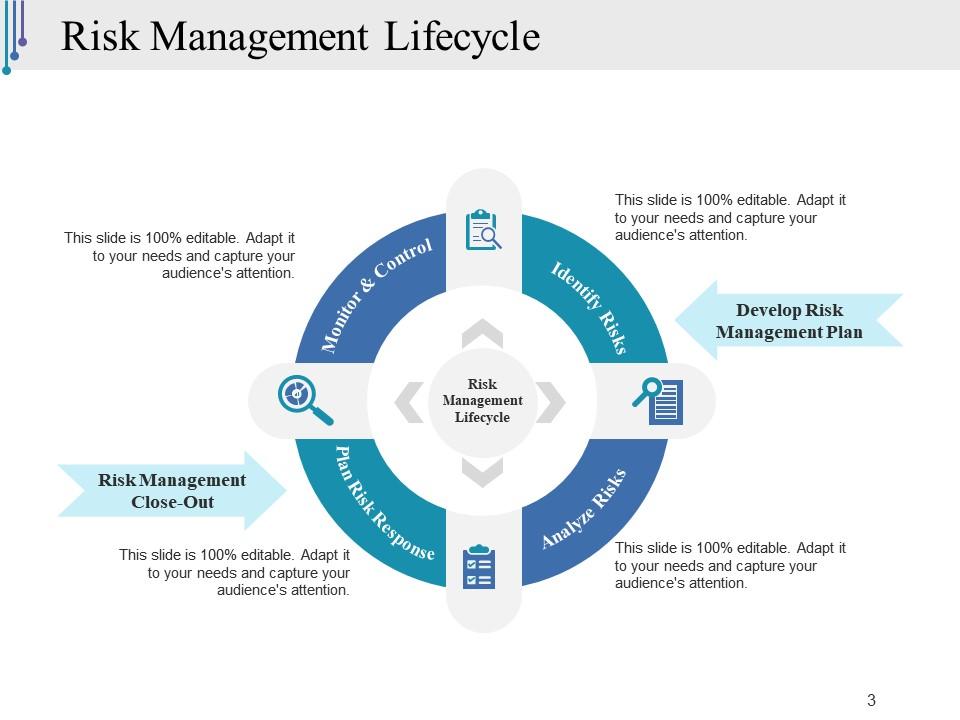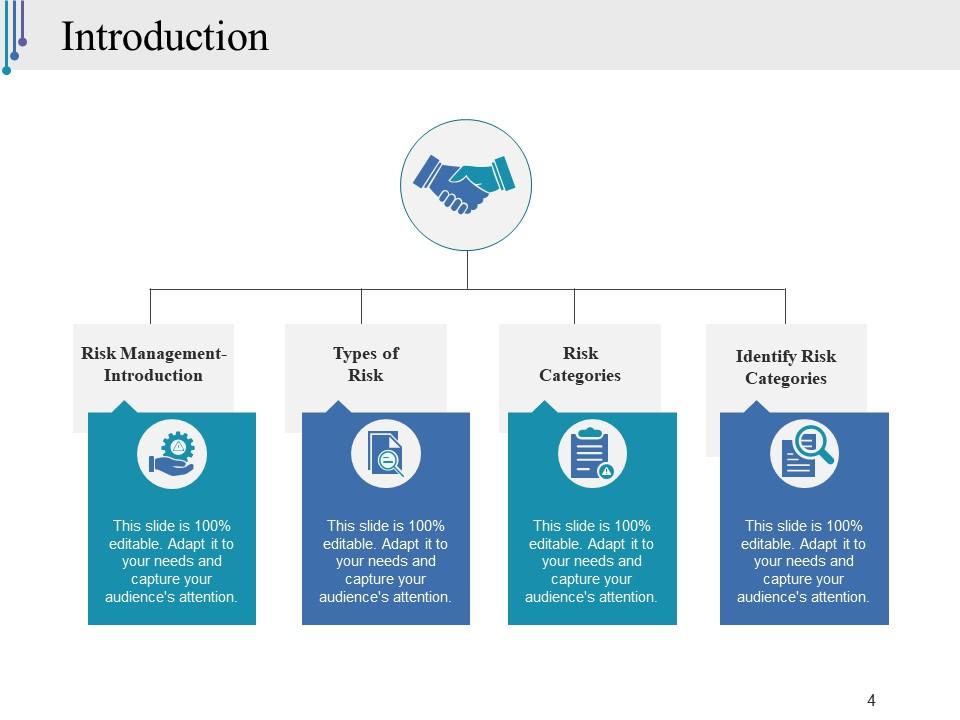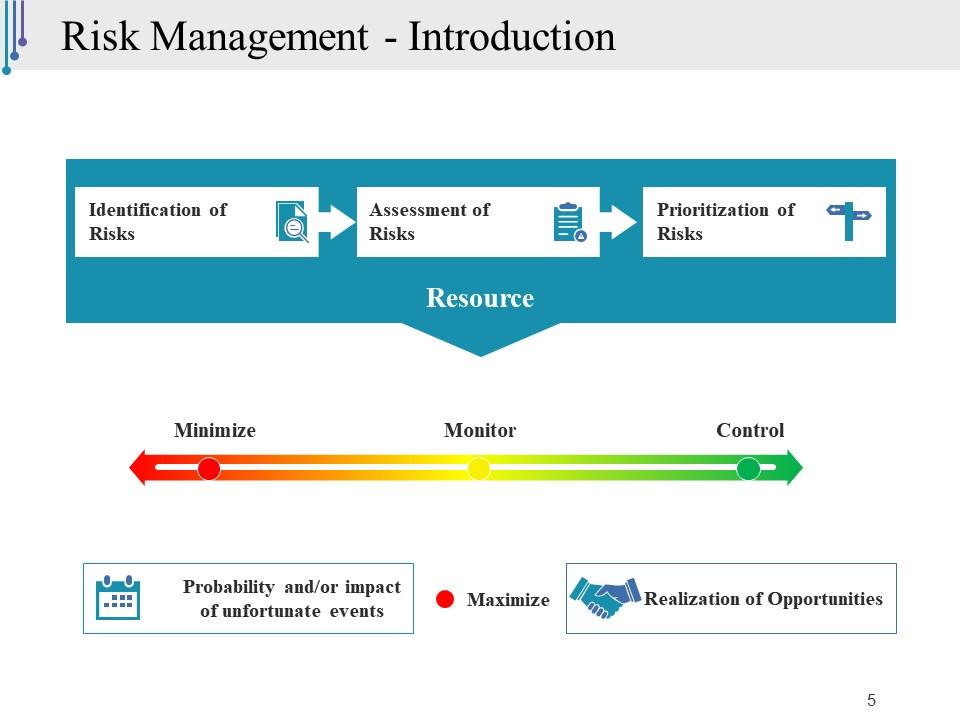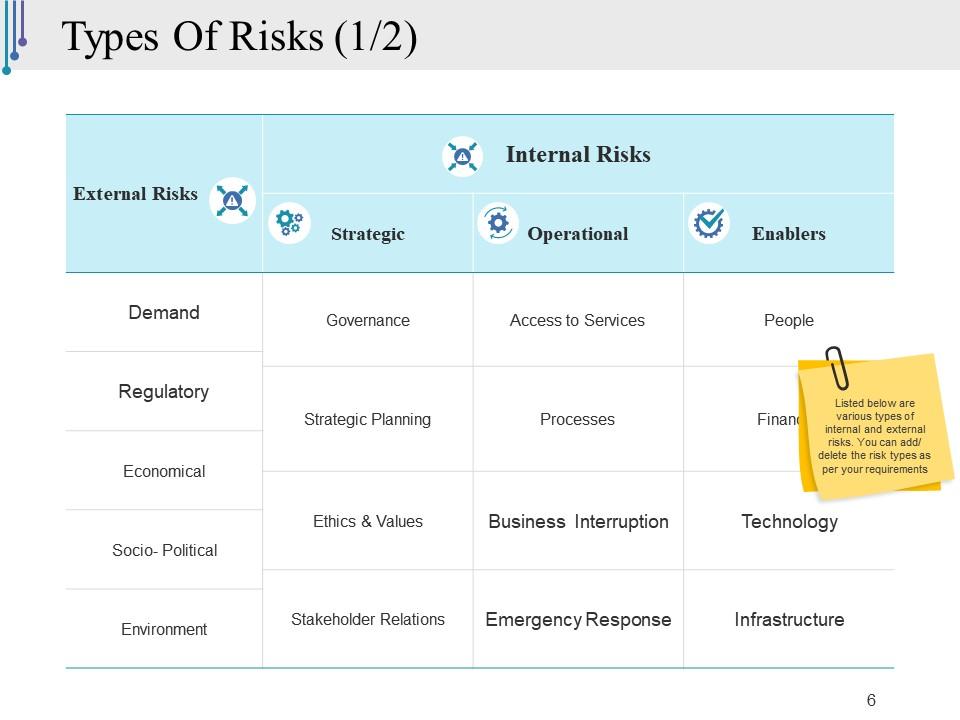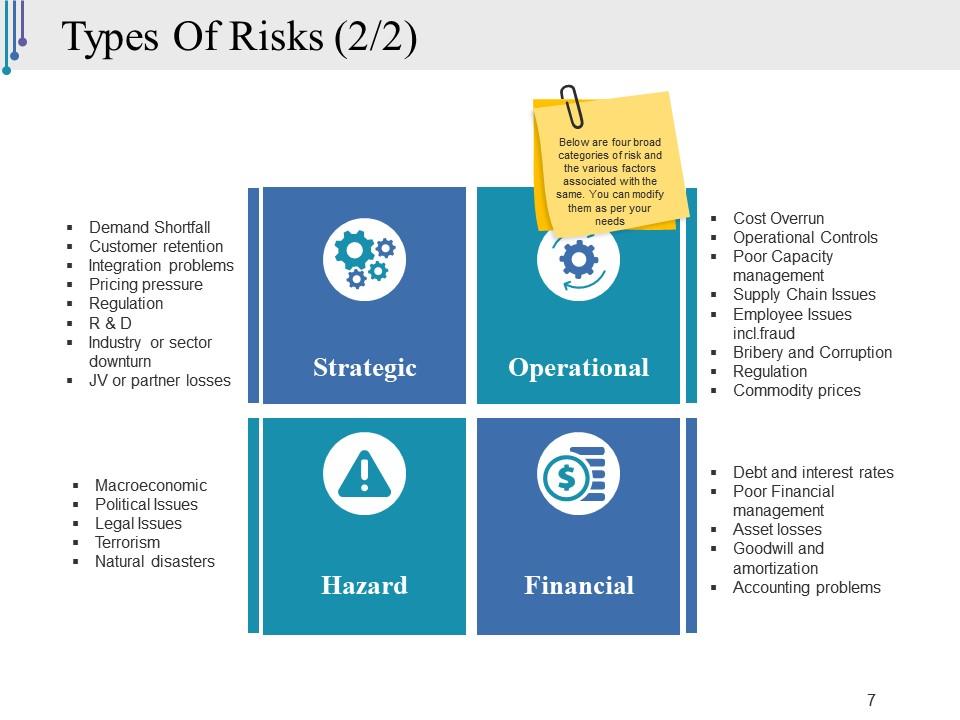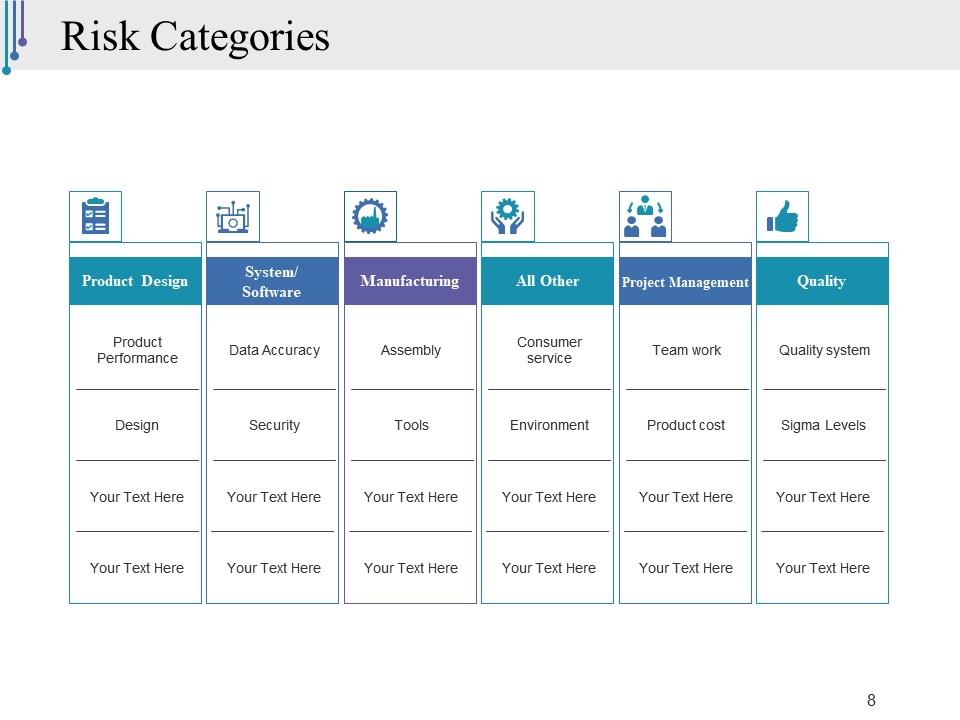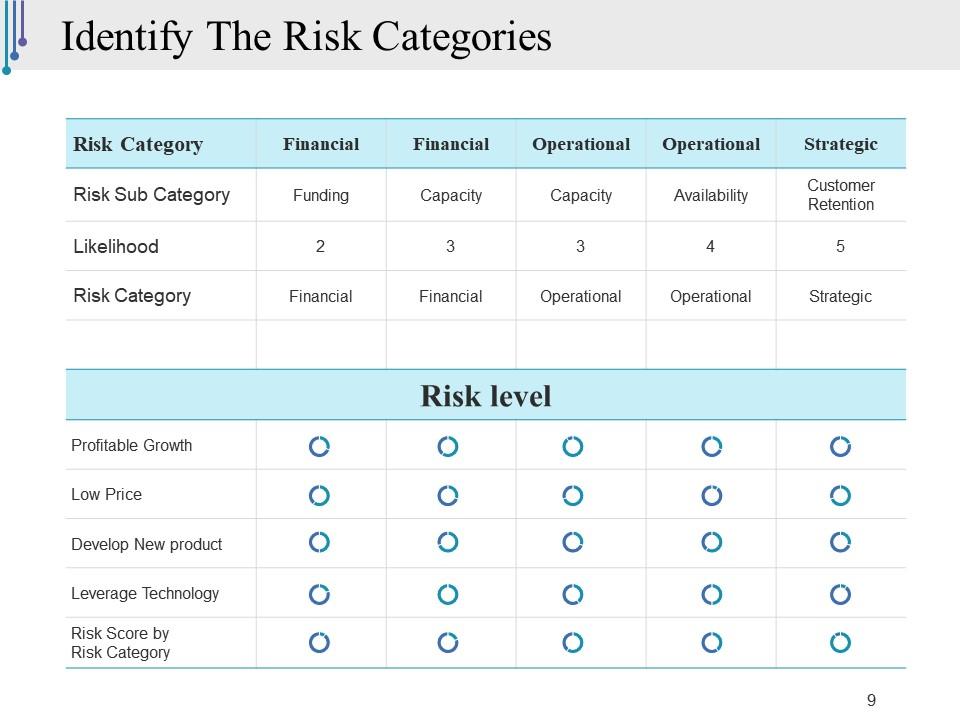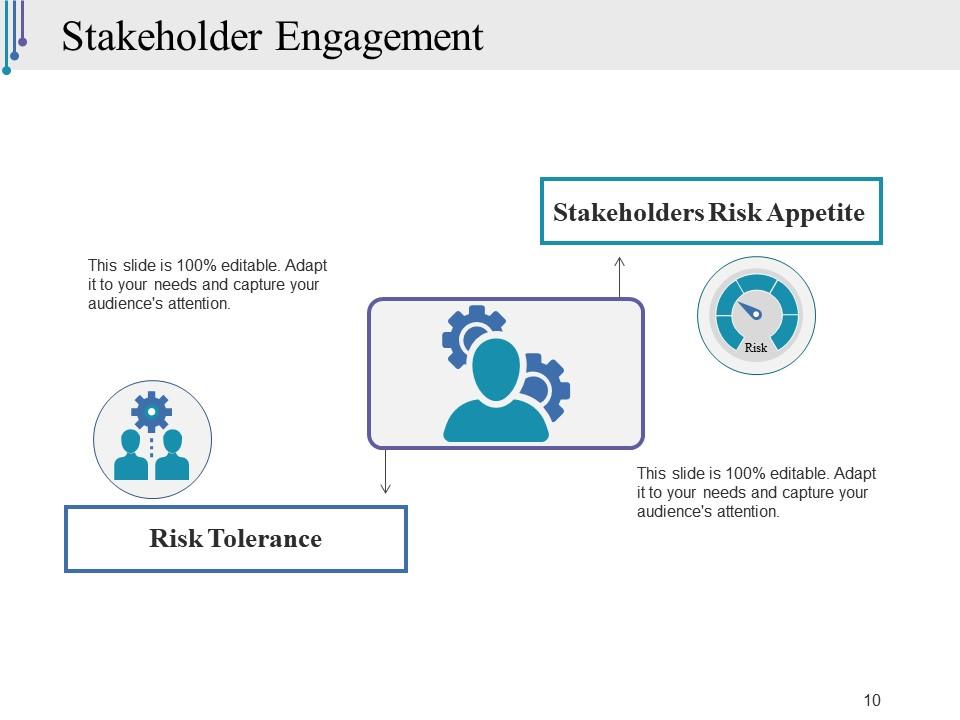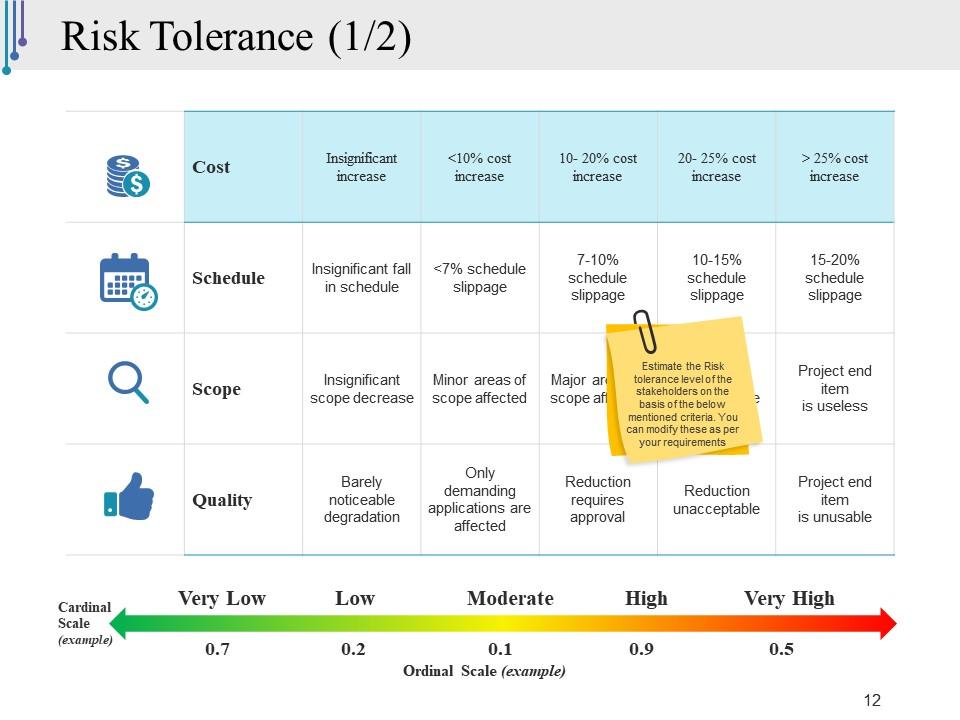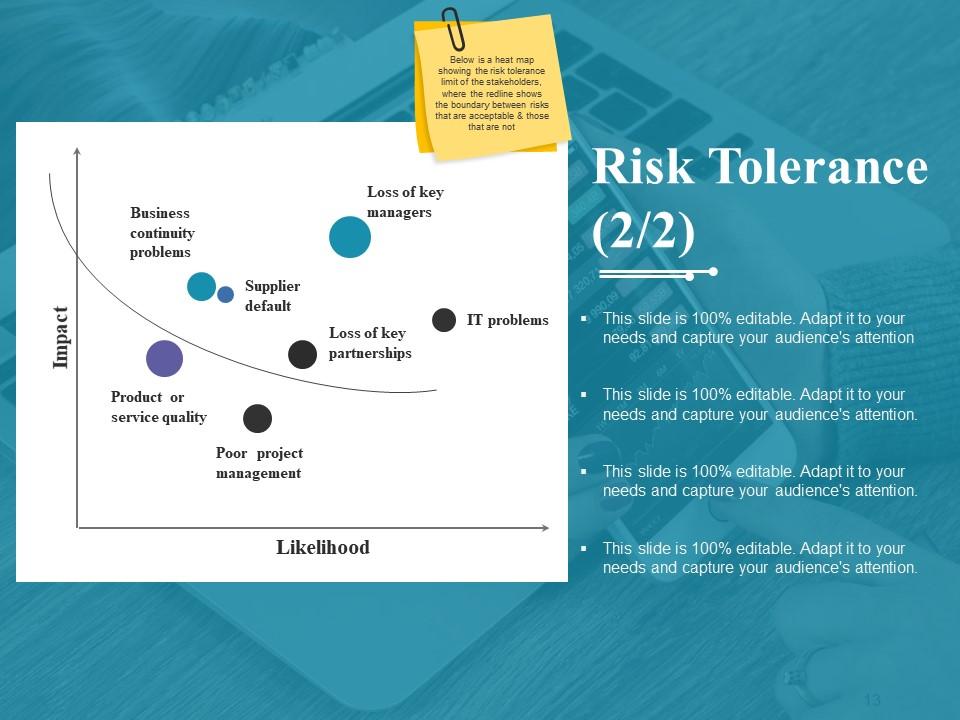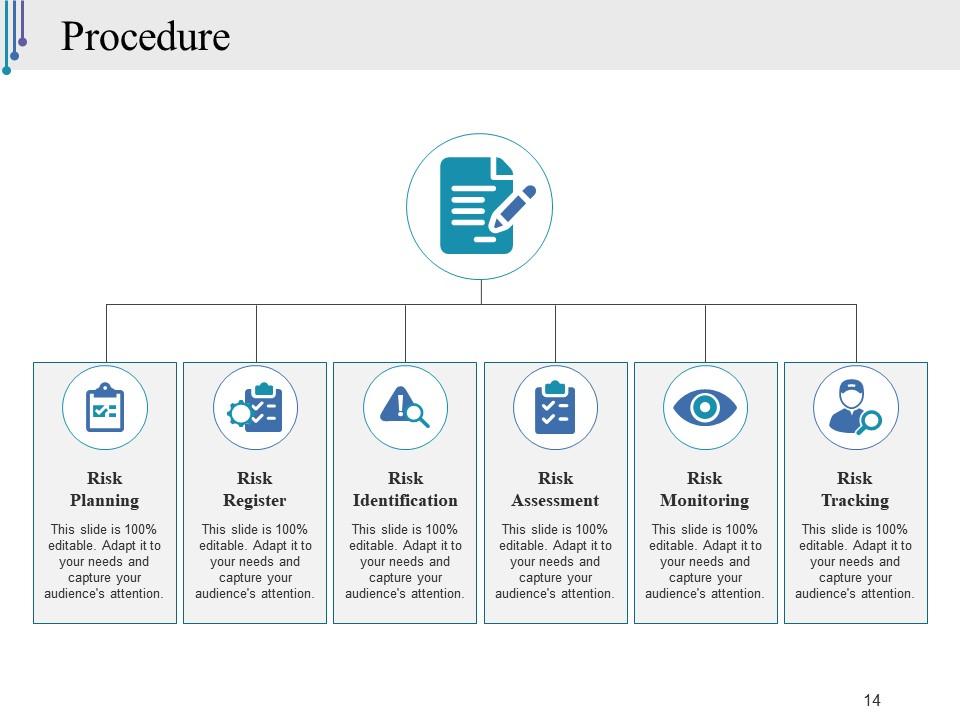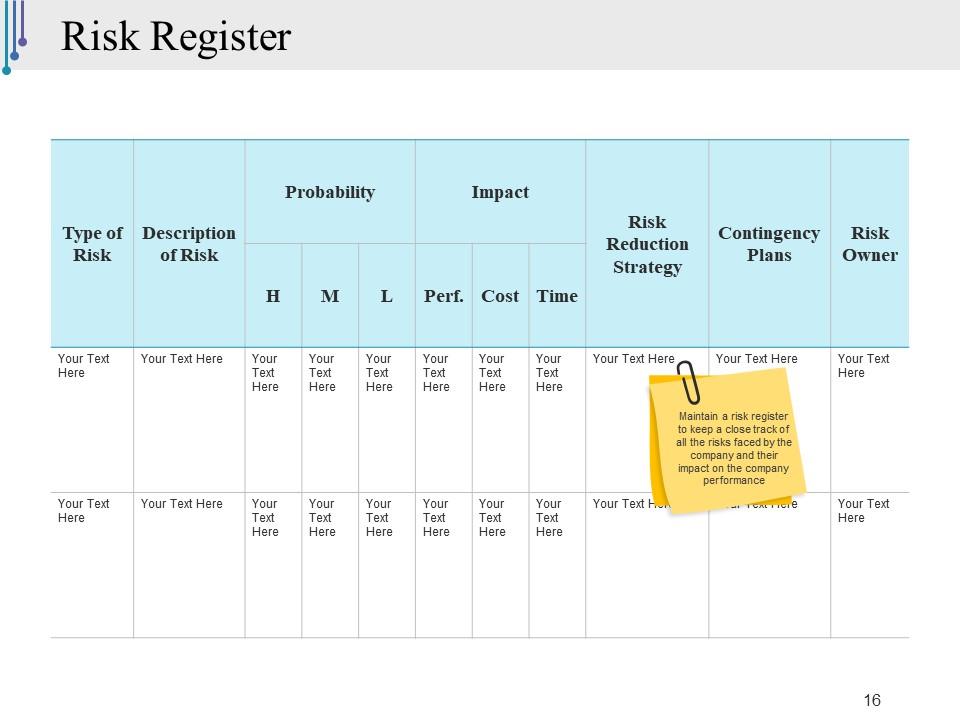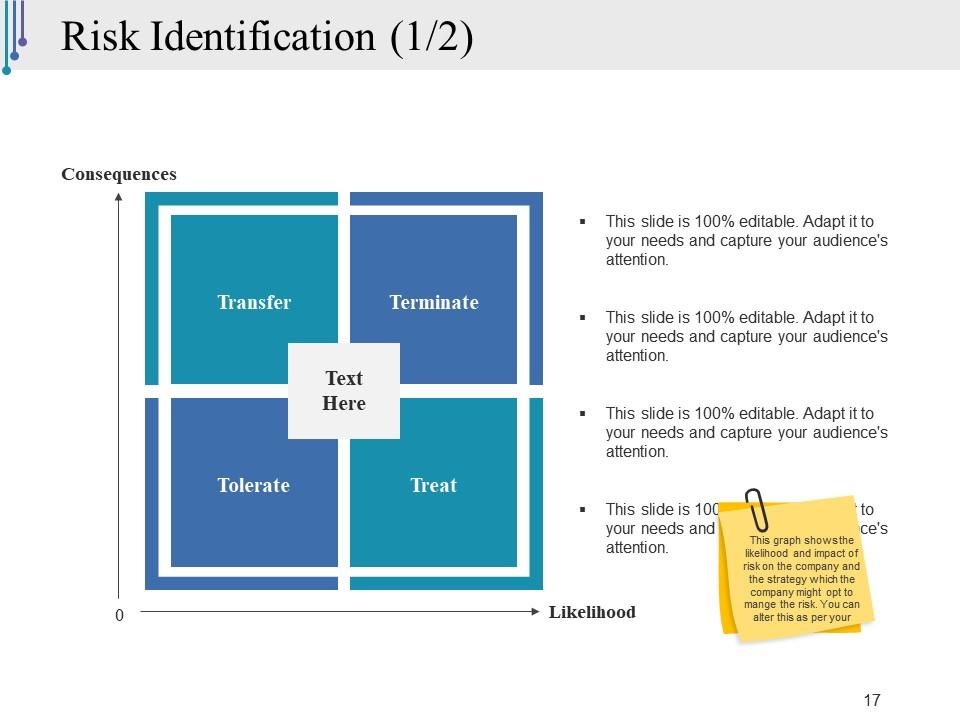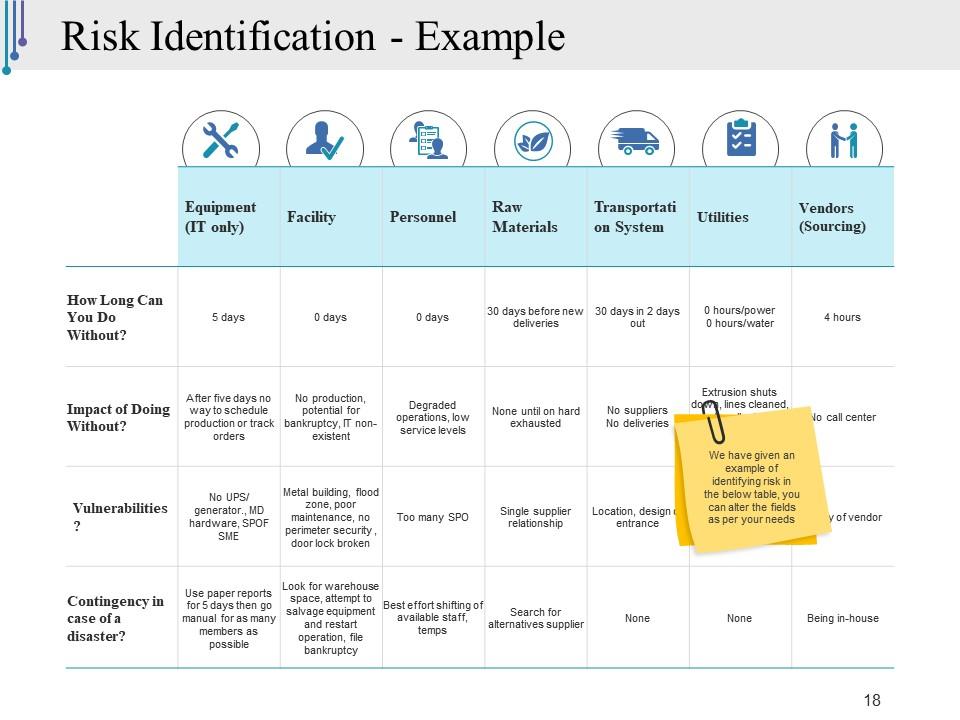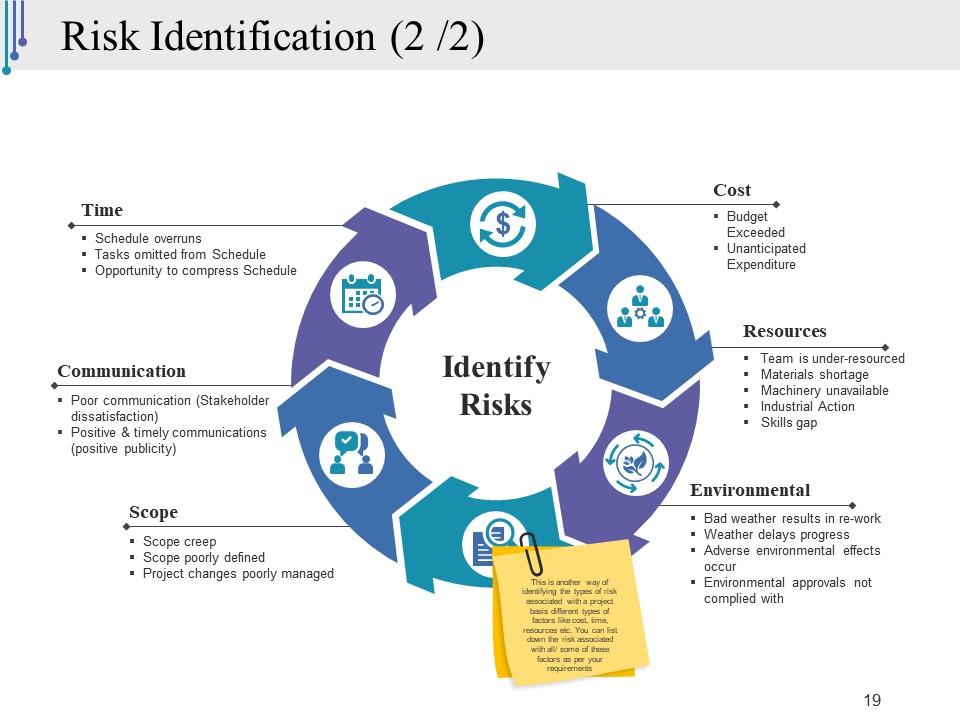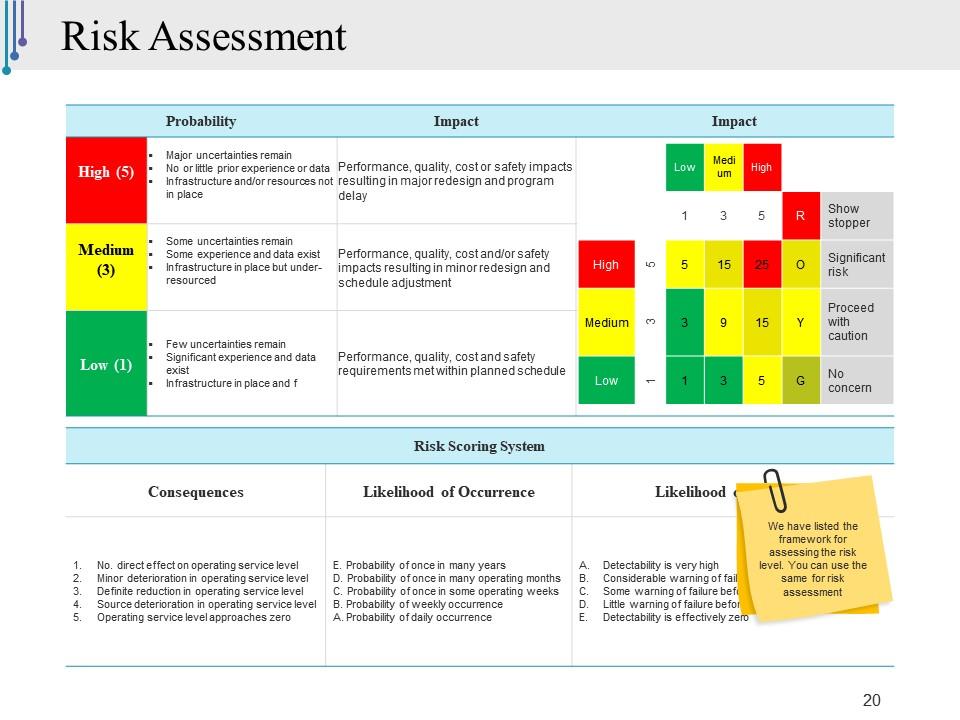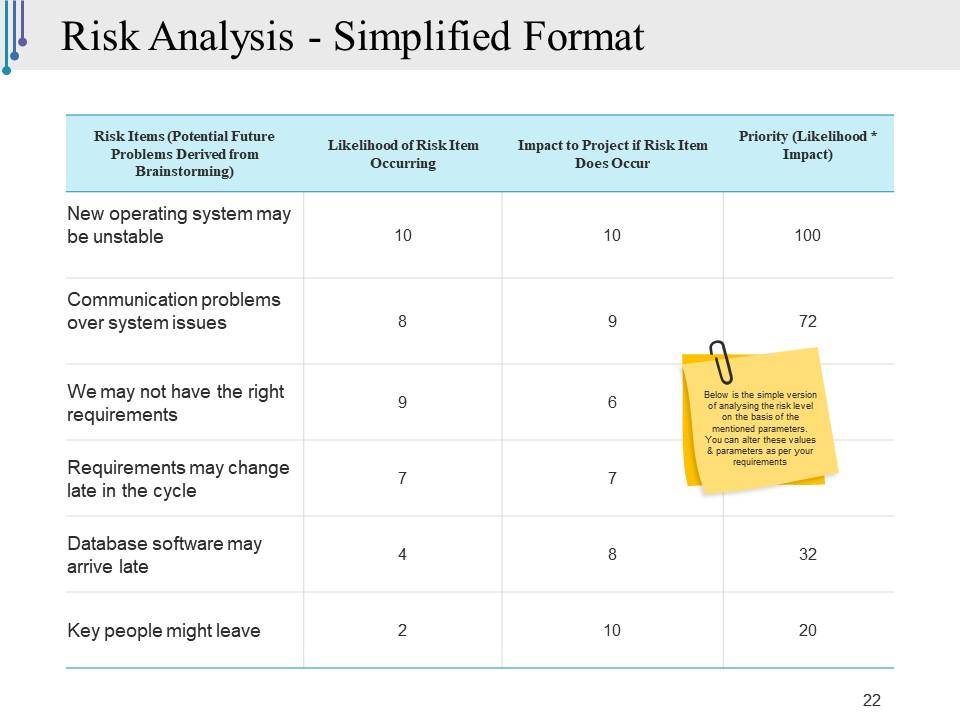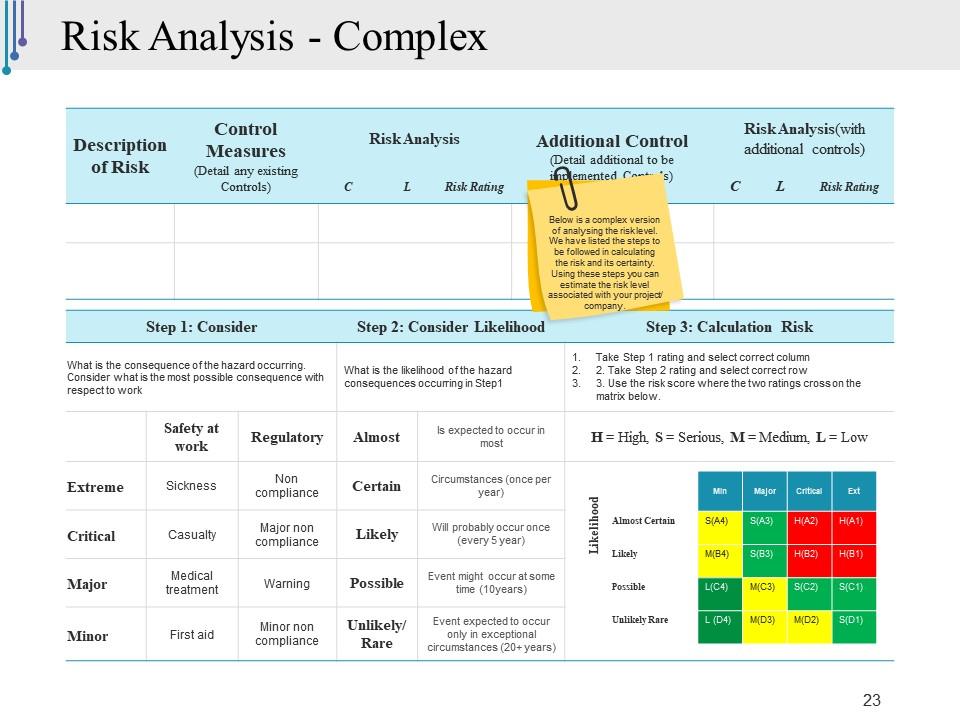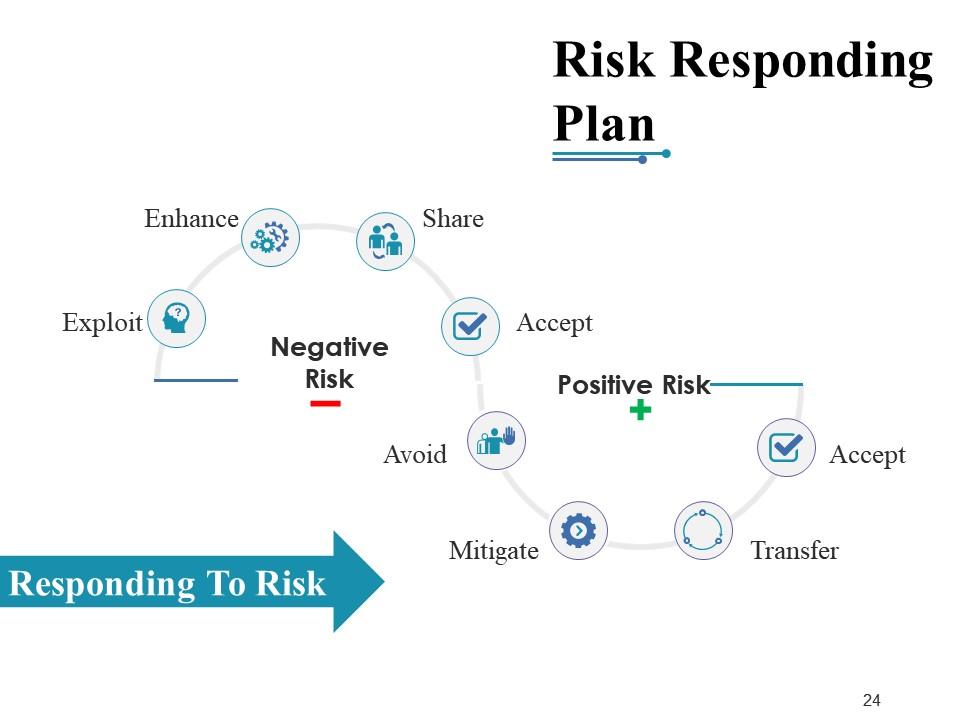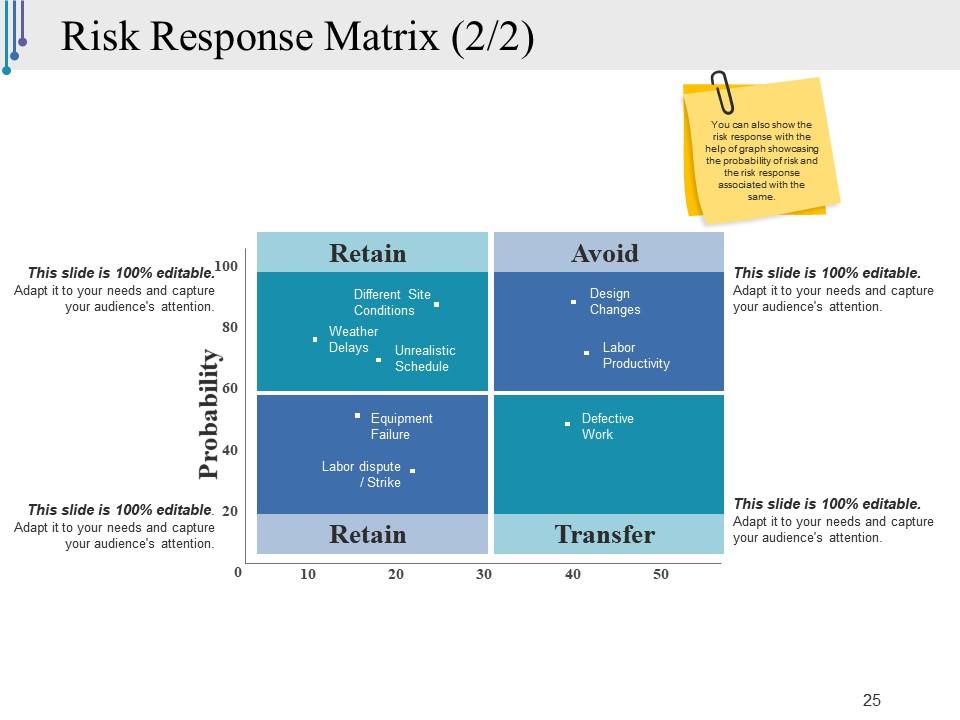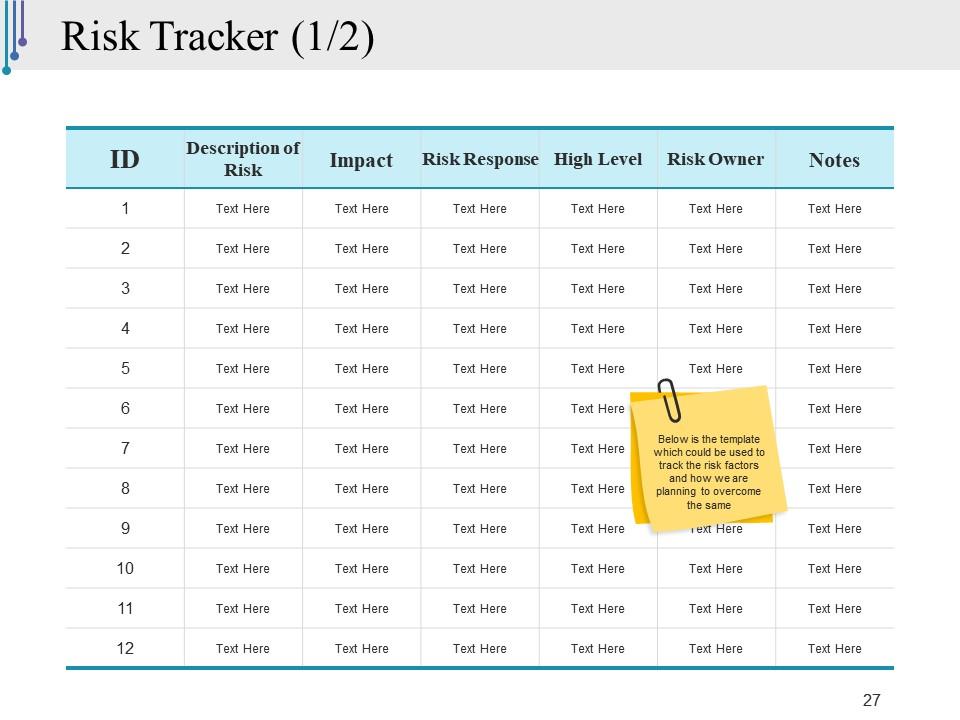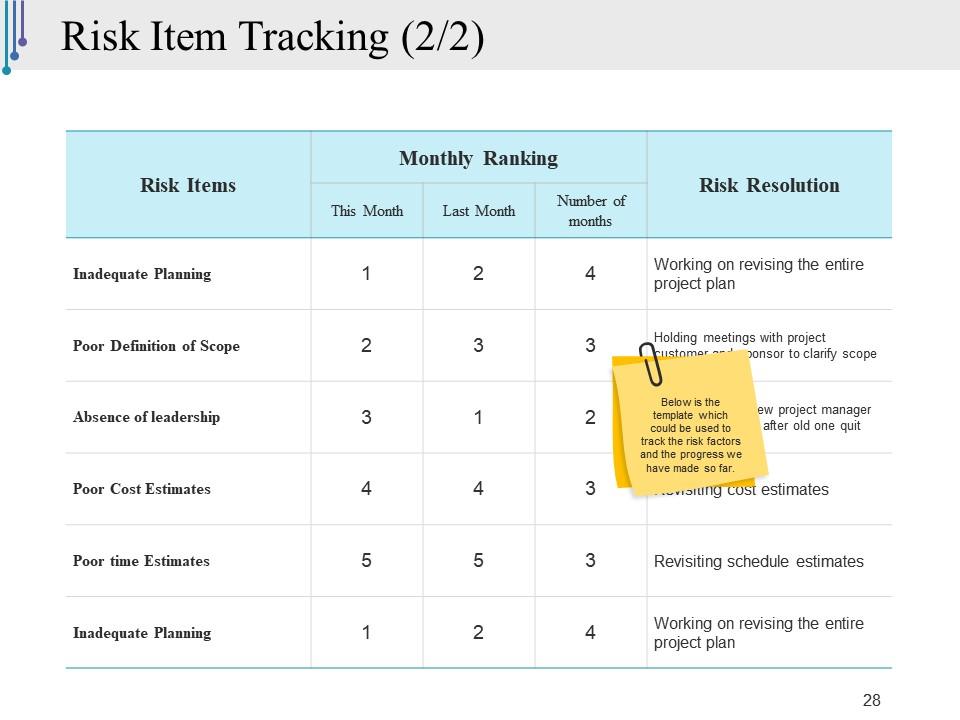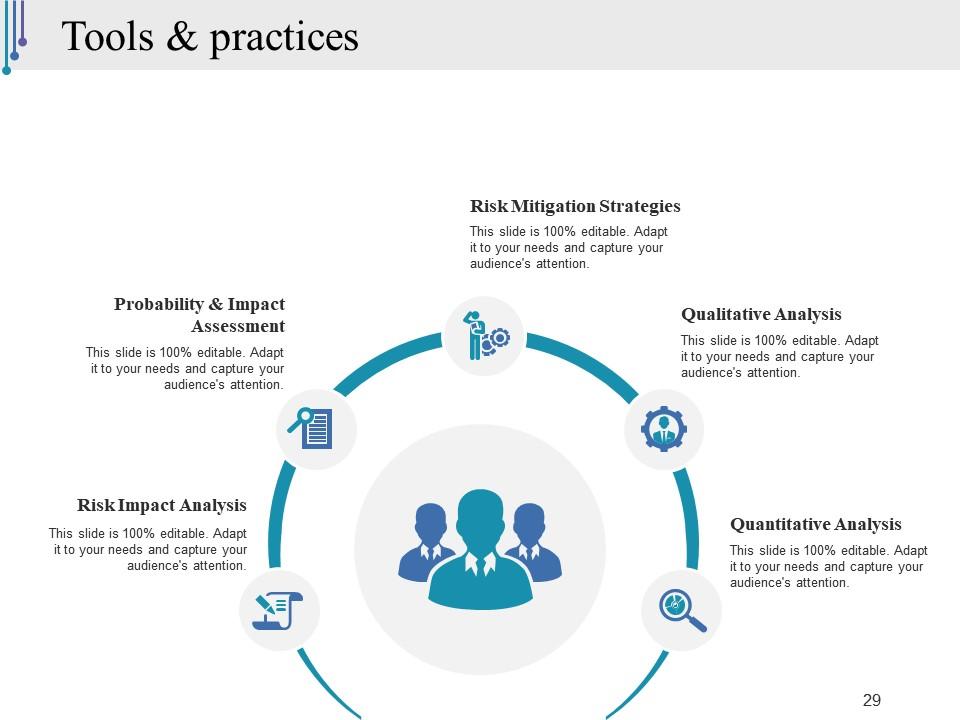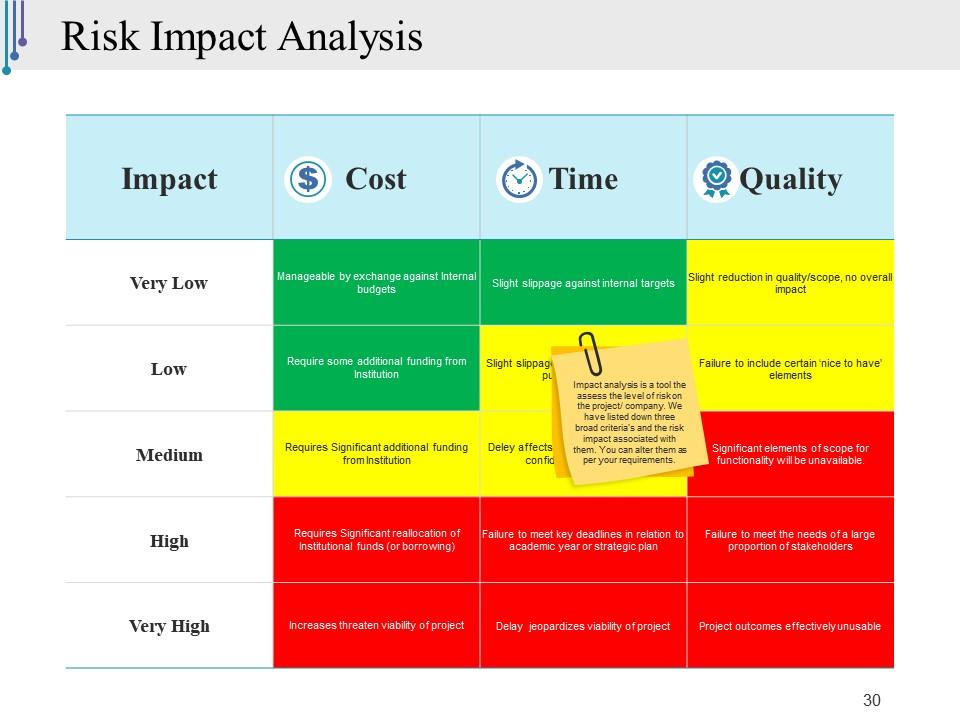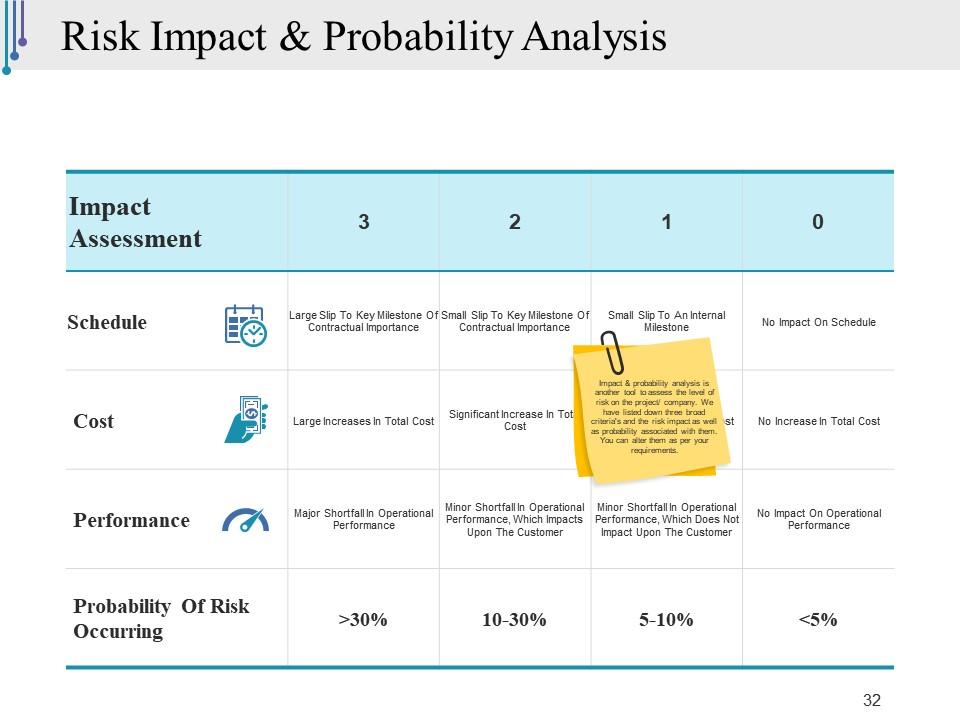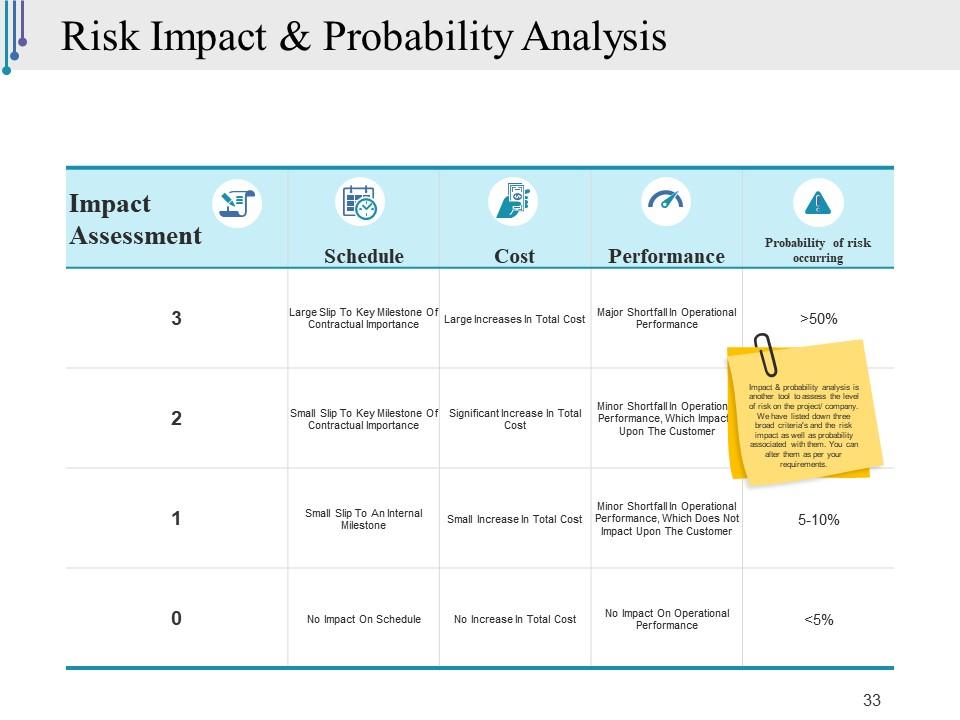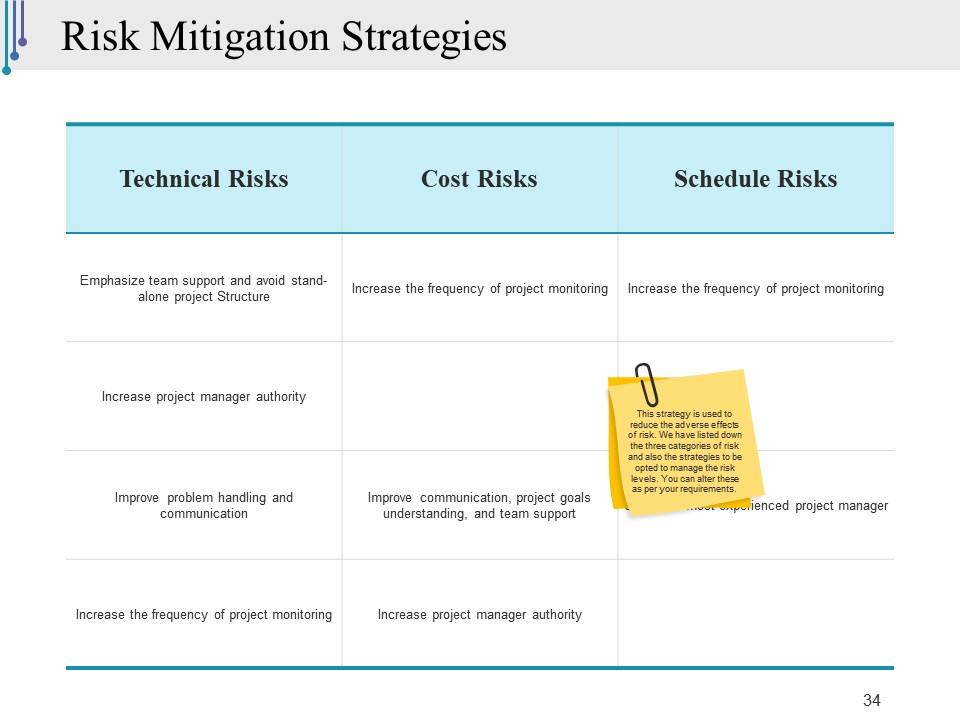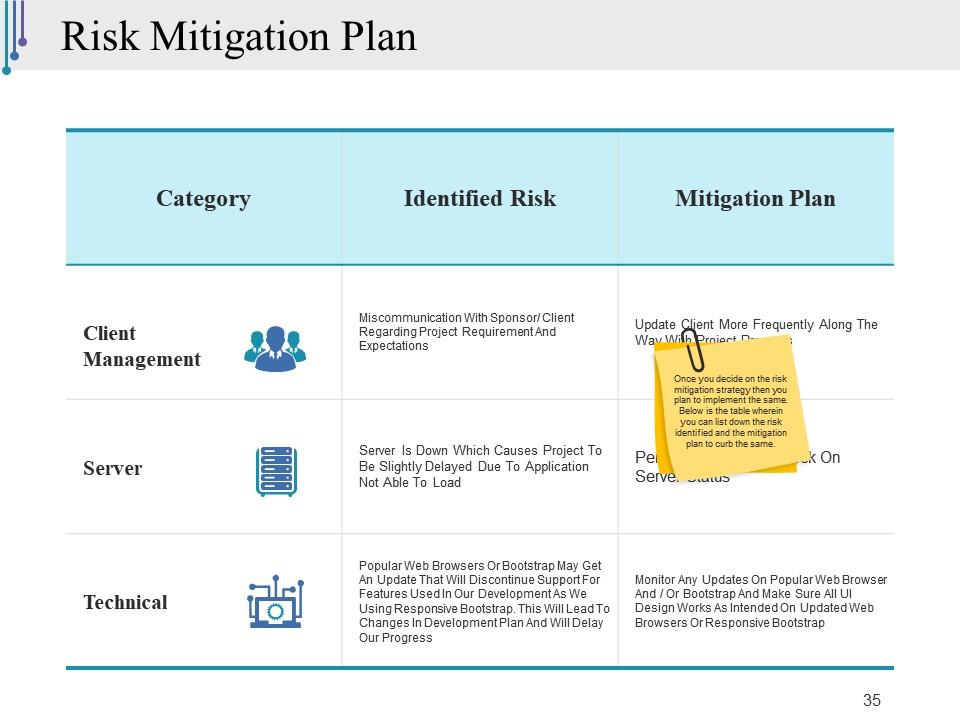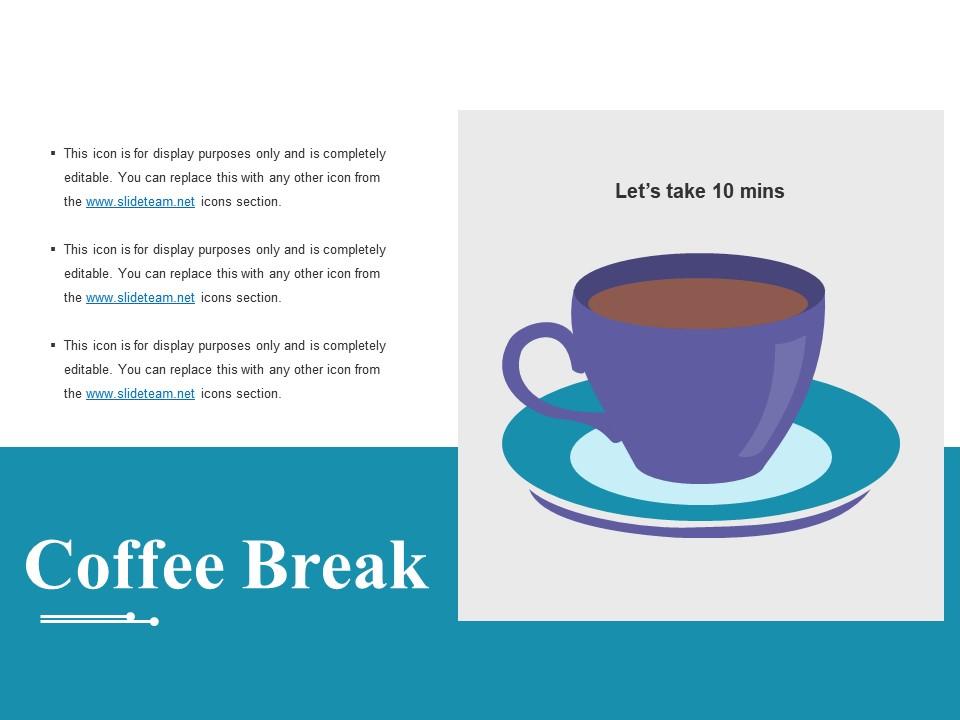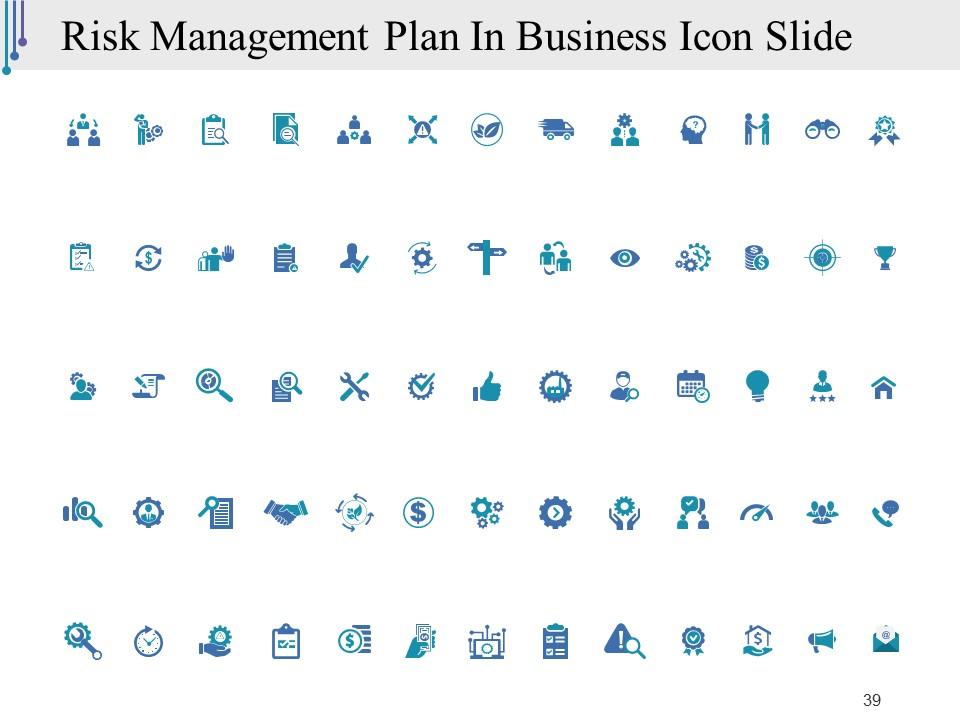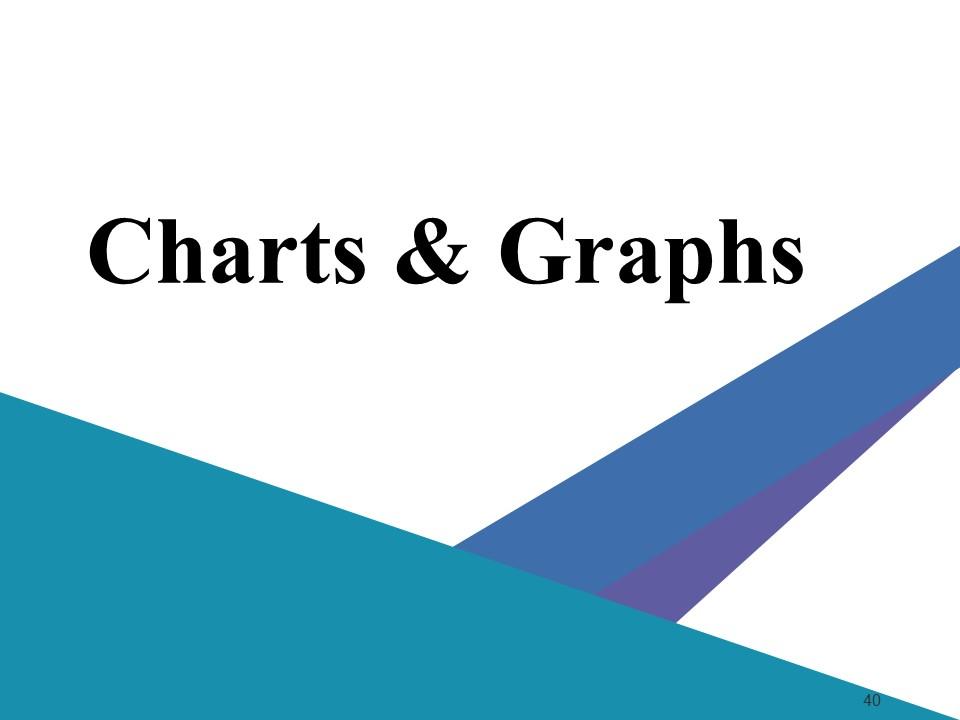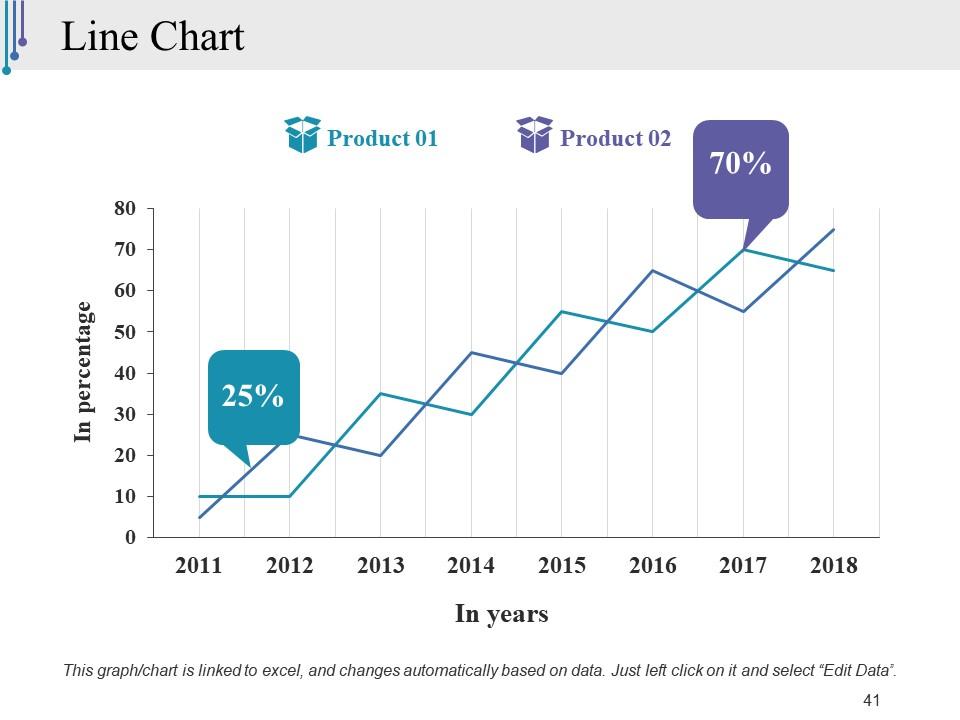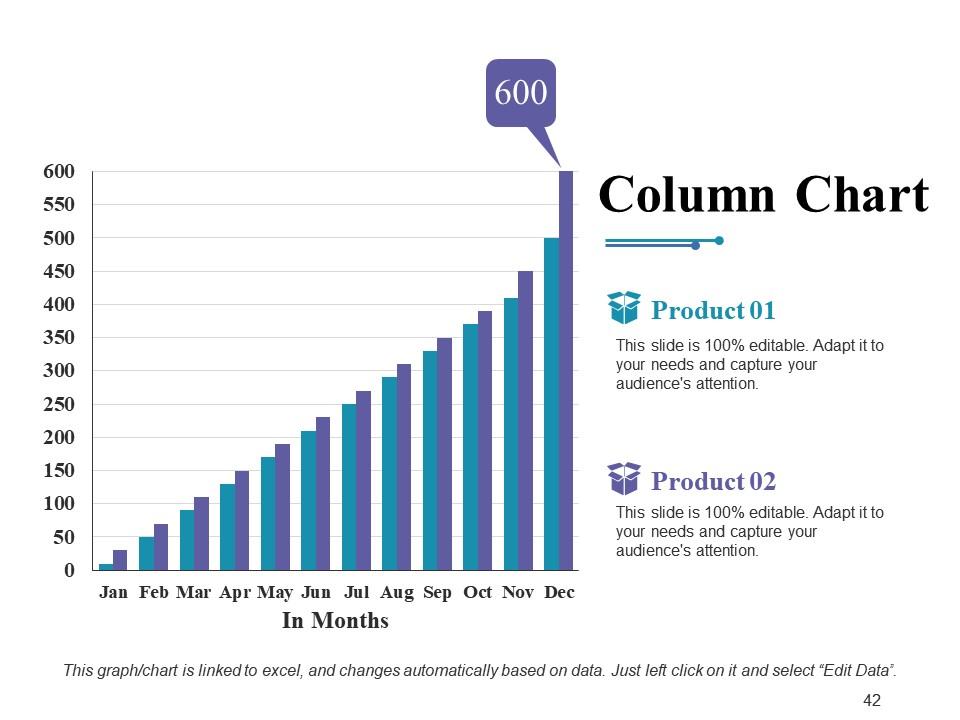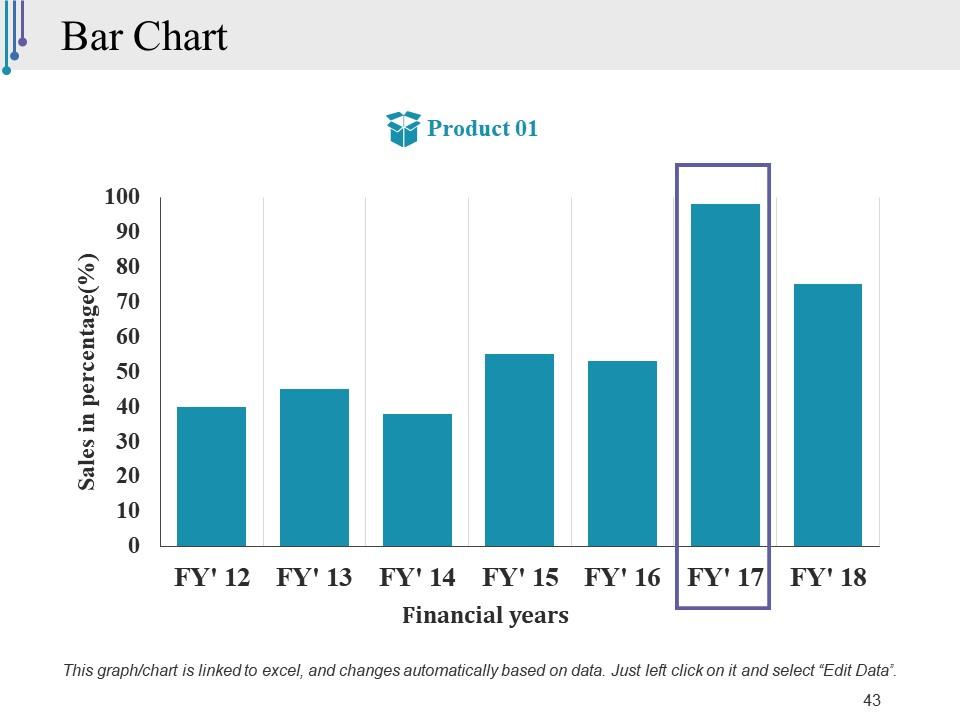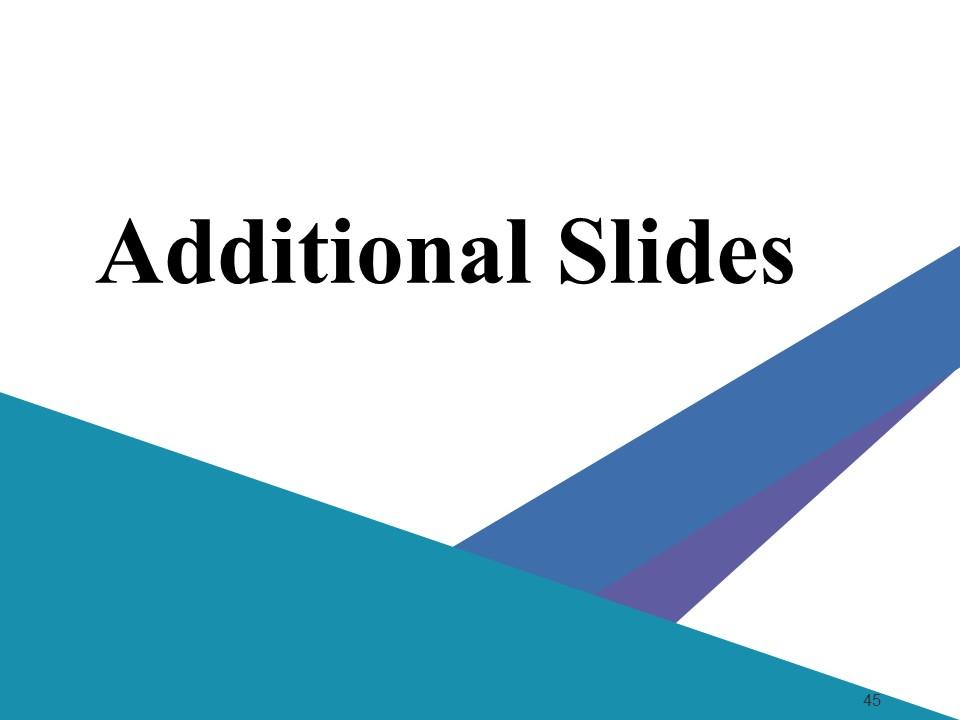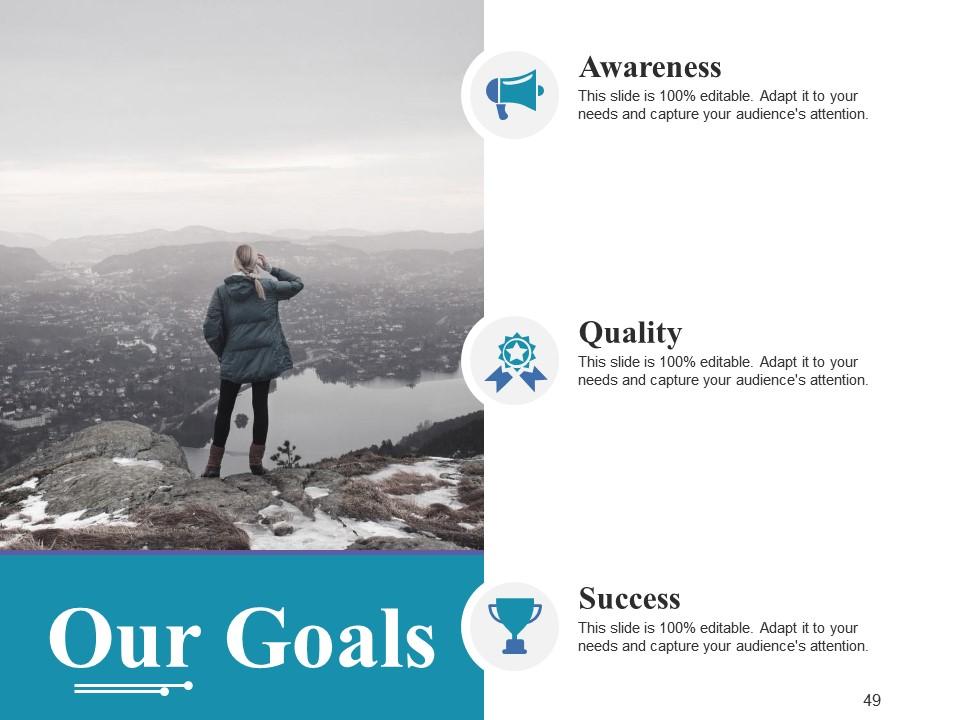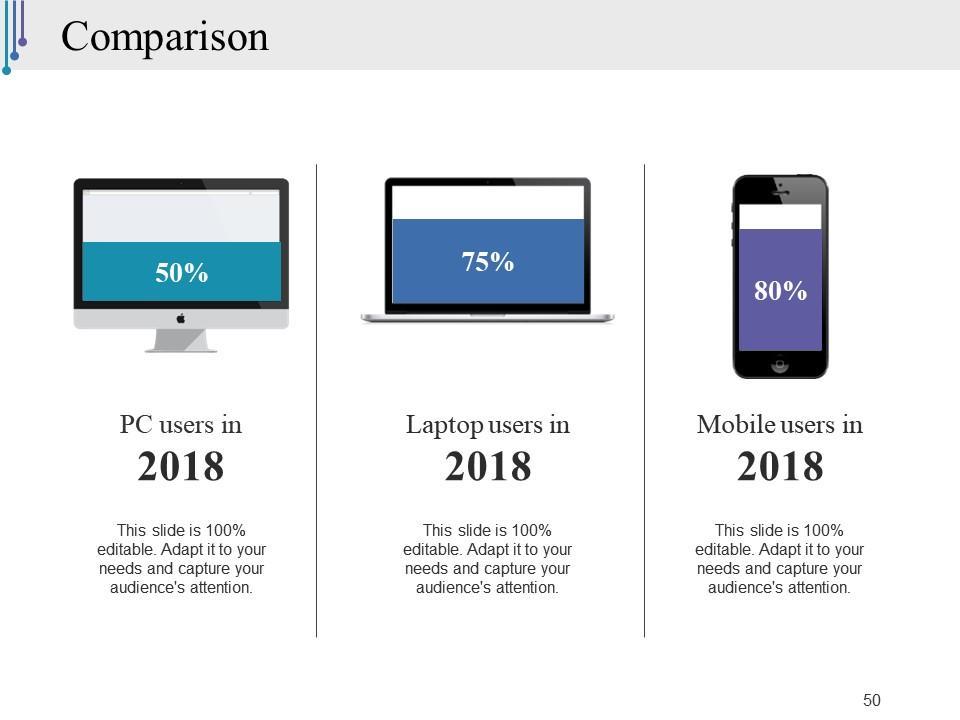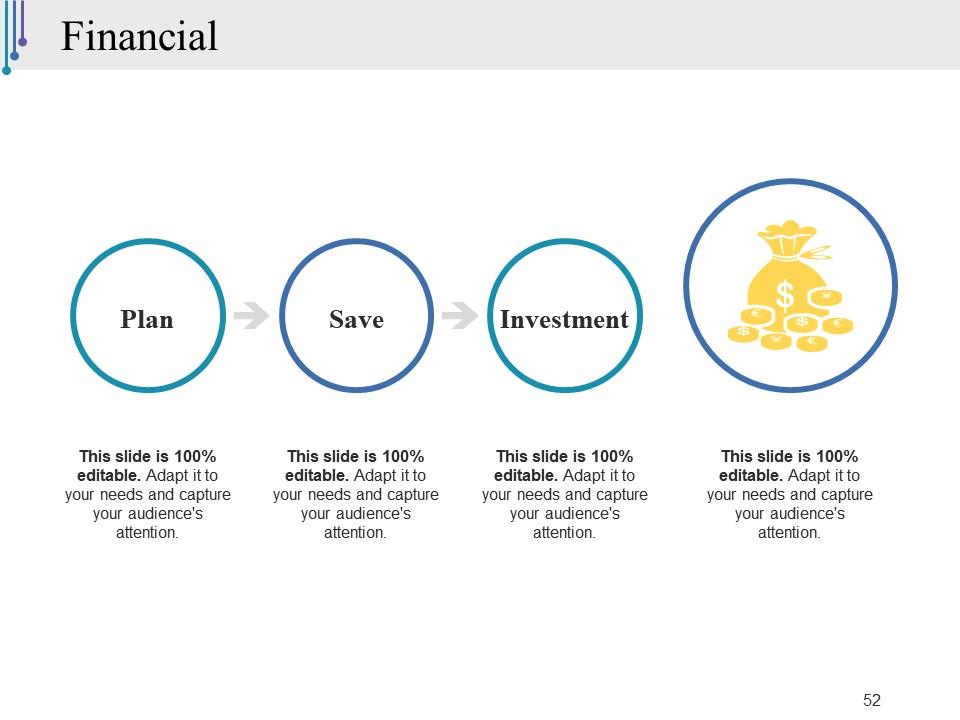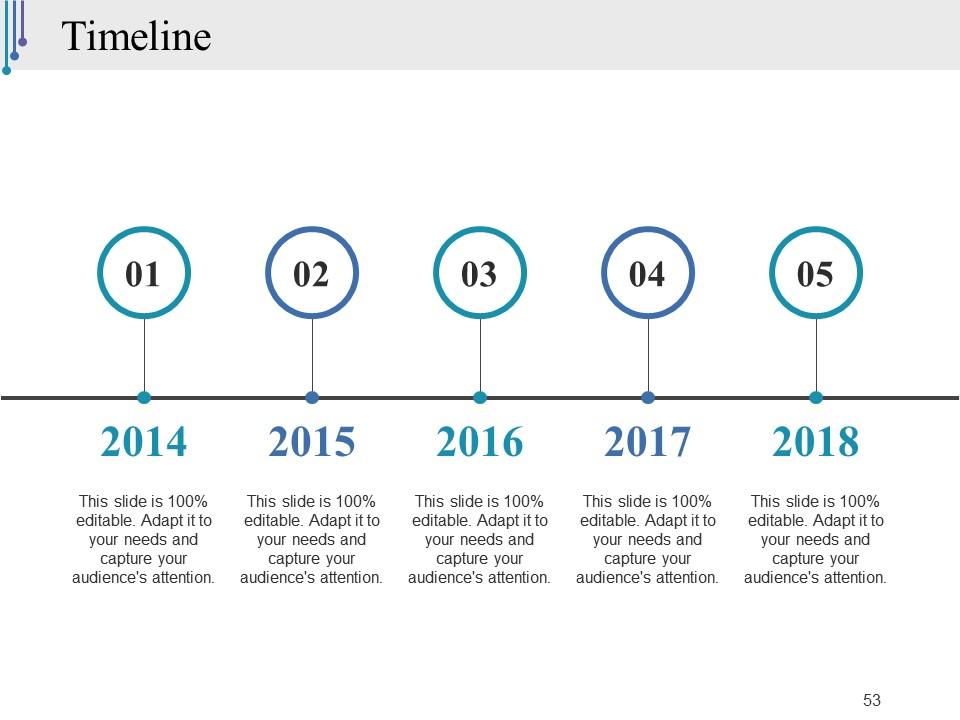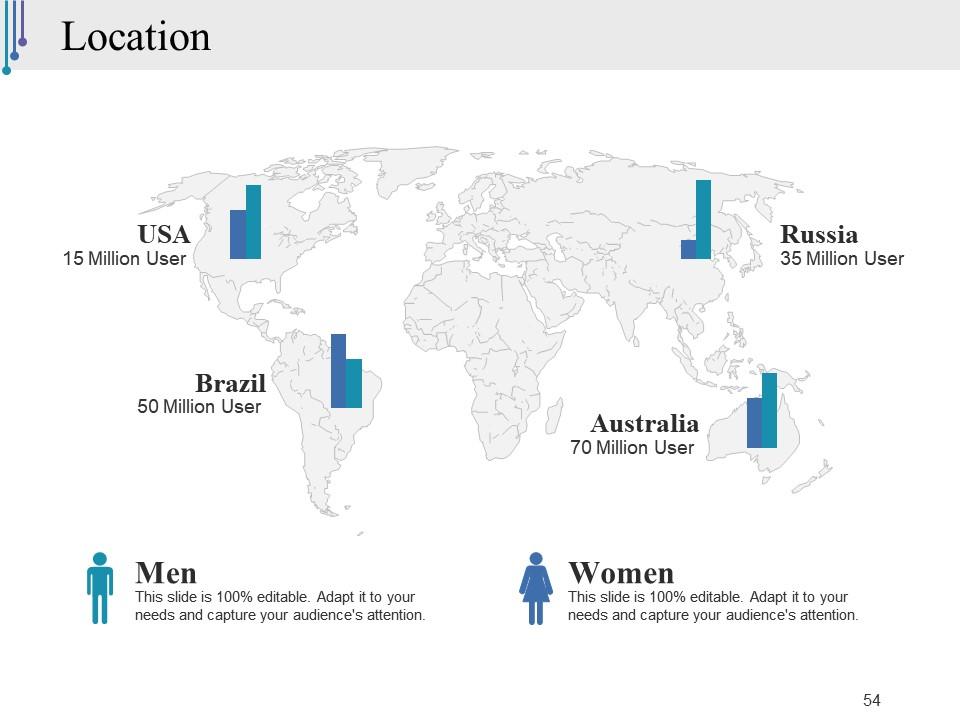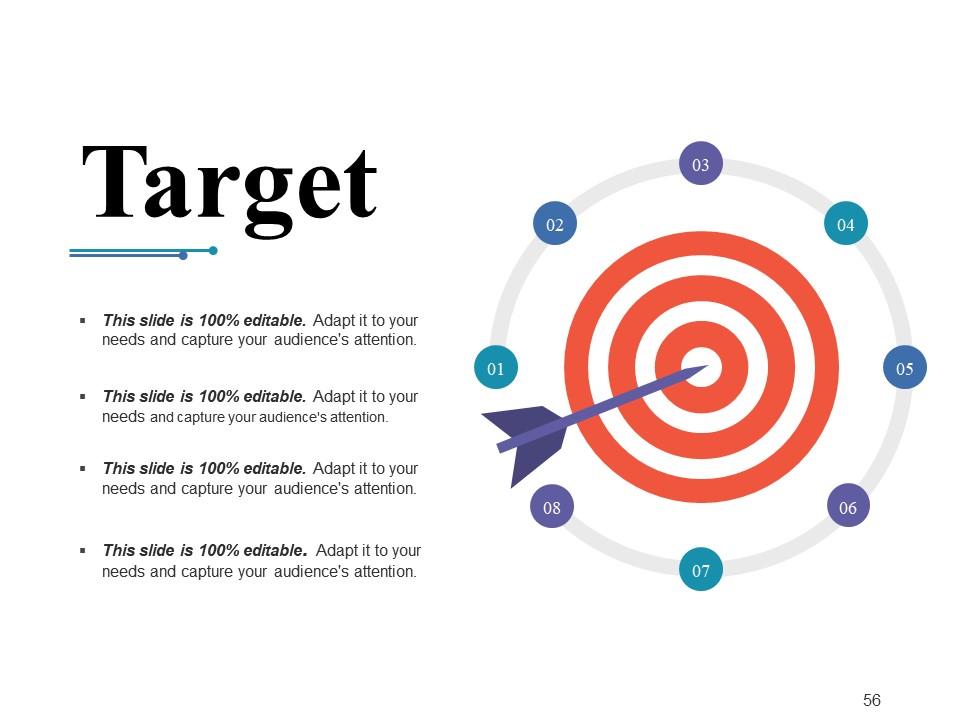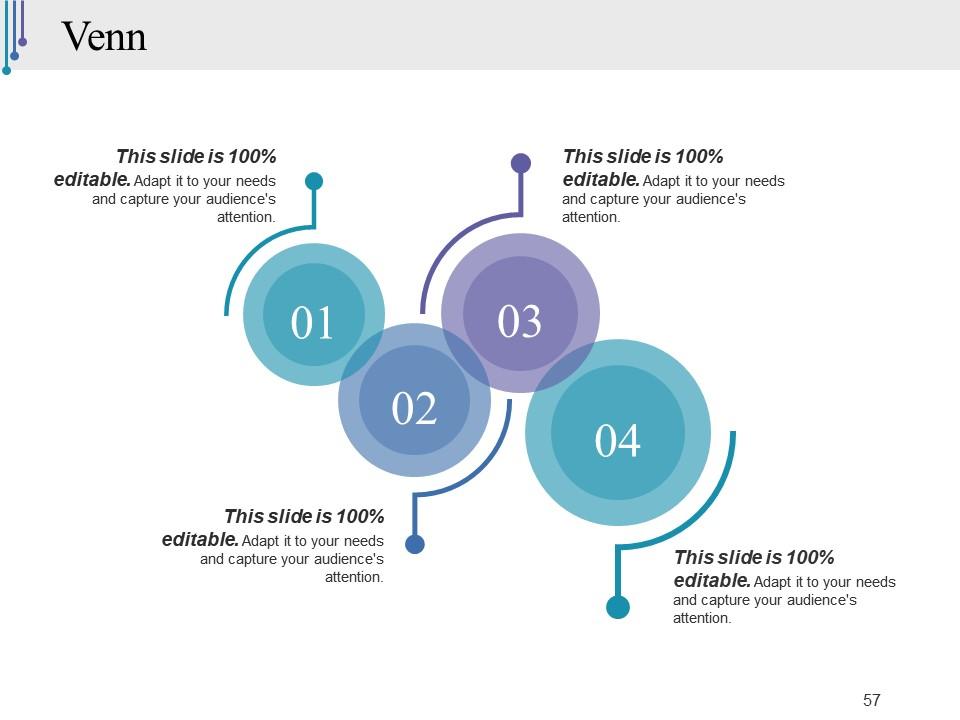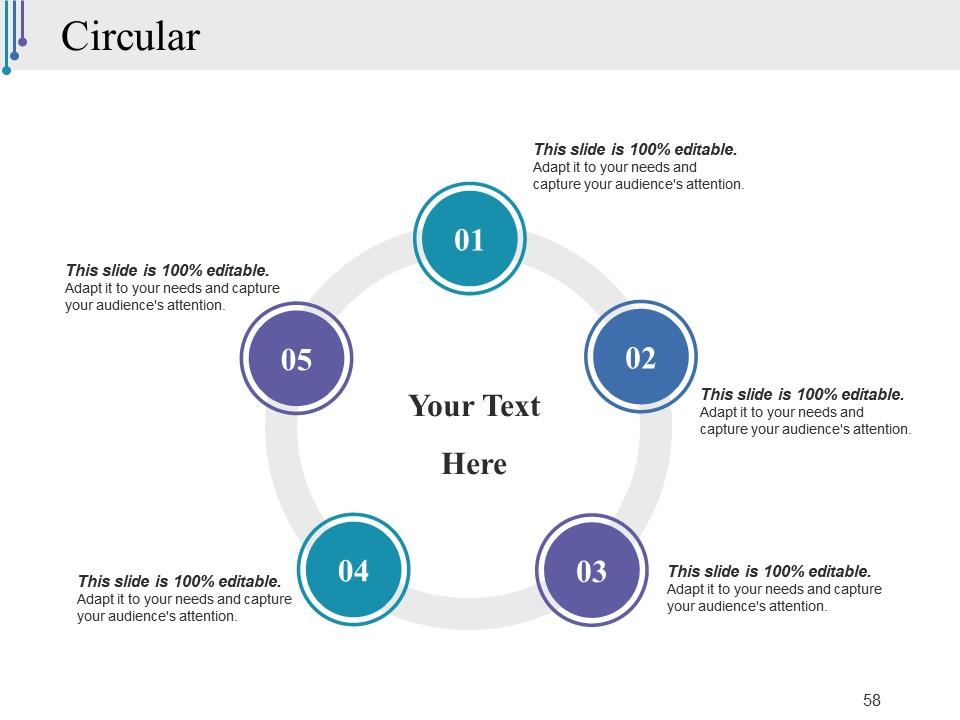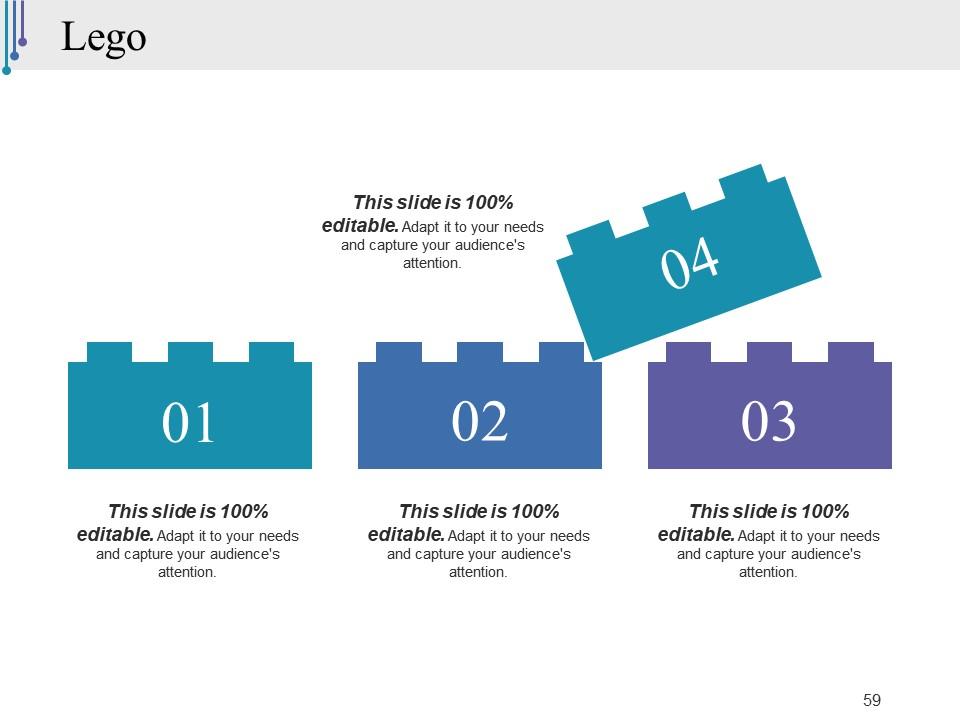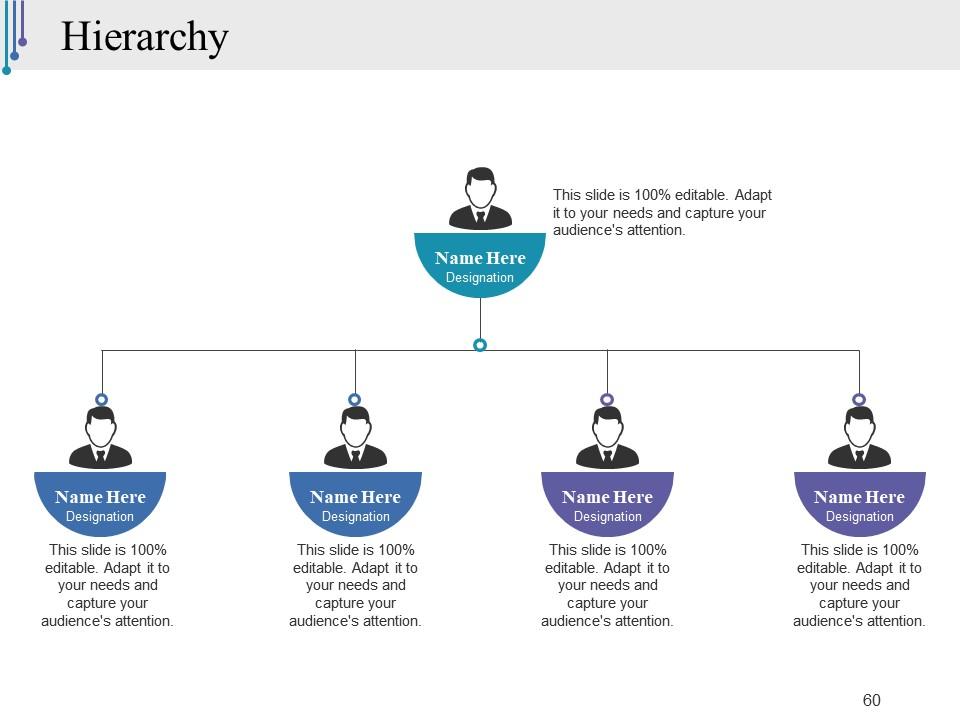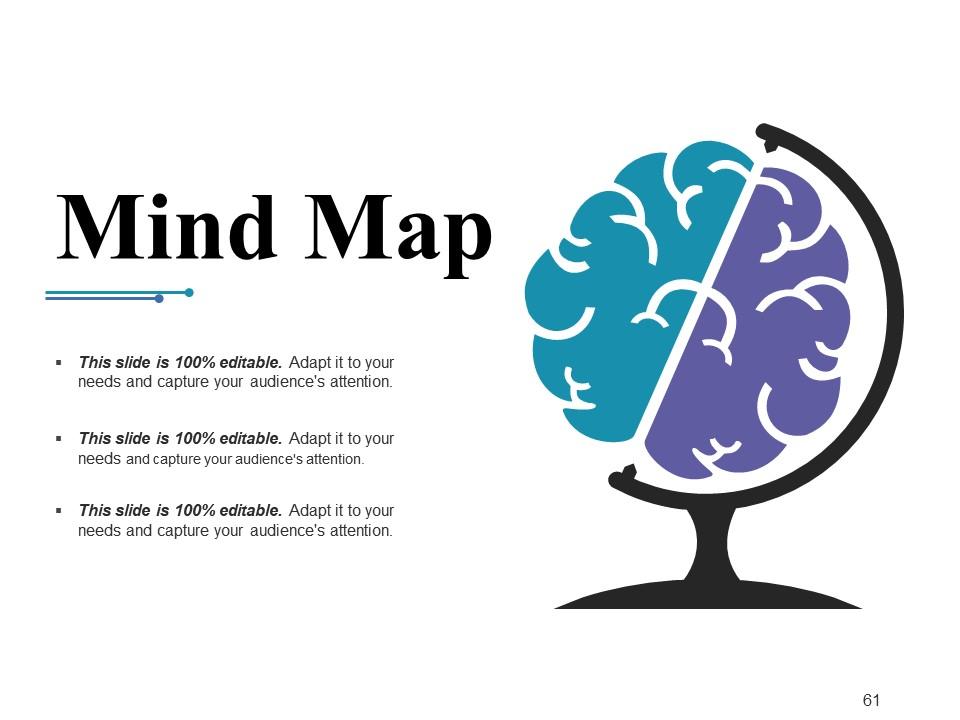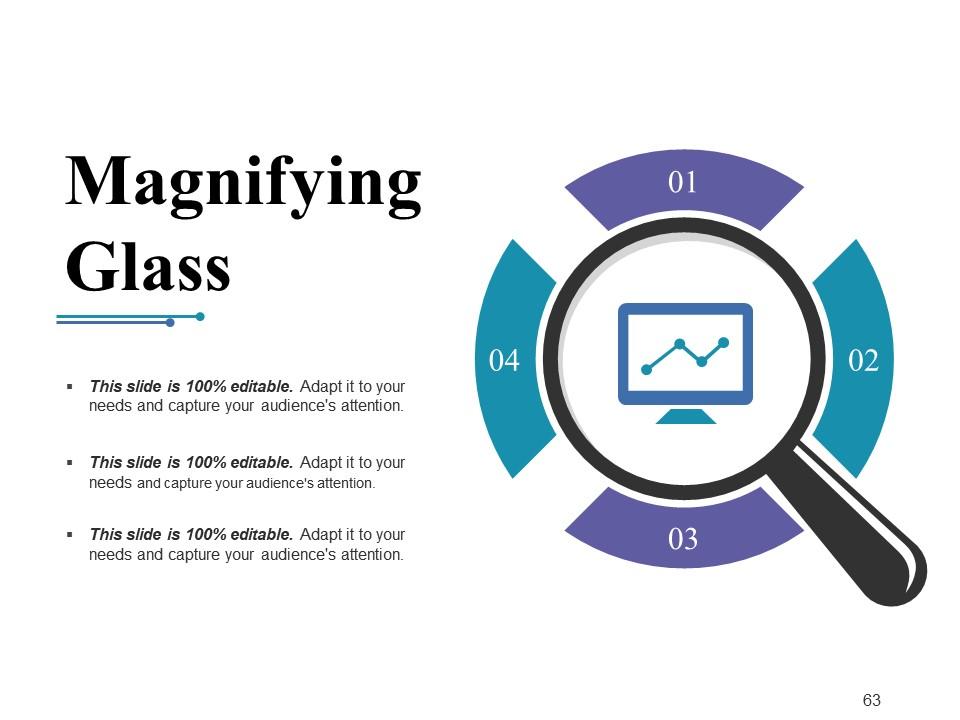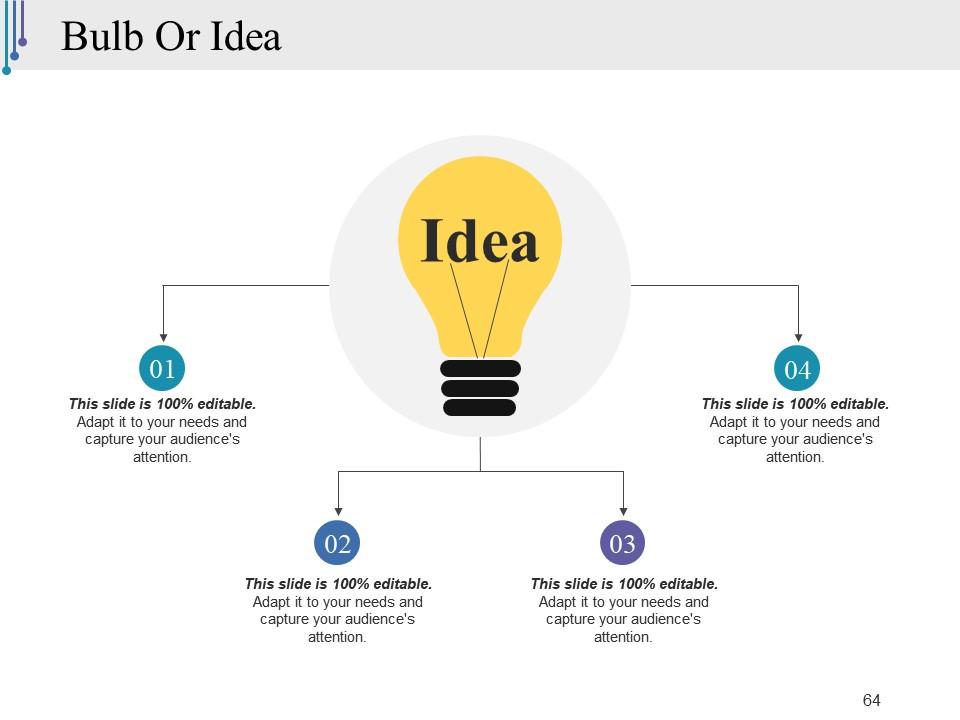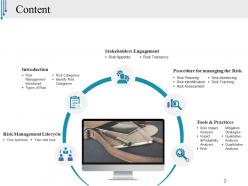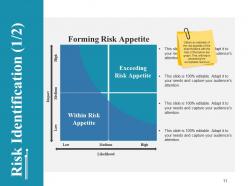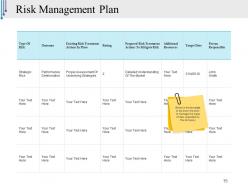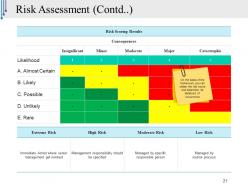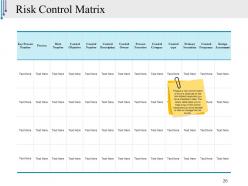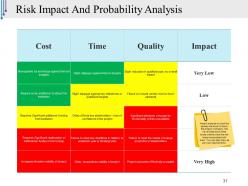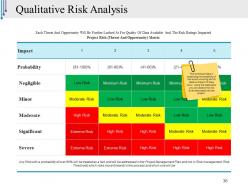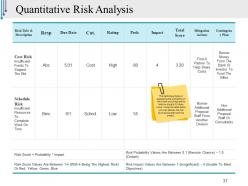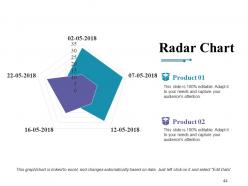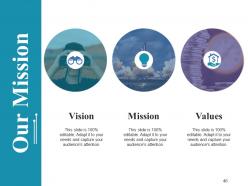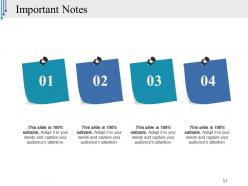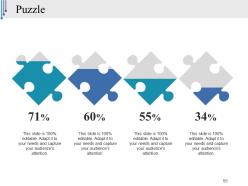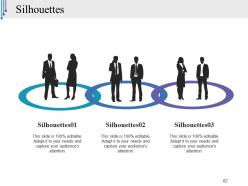Risk management plan in business powerpoint presentation slides
There might be inherent risk that cannot be avoided and thus a Risk Management Plan in Business PowerPoint Presentation Slides becomes lifeline in such cases. The data compiled and saved in PPT layout not only helps to minimize or eliminate the risk associated but also helps to deal with it effectively at the time of its occurrence. To foresee any risk, a risk assessment matrix is a must and the same is supplied from our end in a structured and professional manner in the presentation template. Line and flow charts in PPT template acts as the oxygen to eliminate risks like strategic, compliance, financial, operational and reputational hazards. The core risk management steps have been addressed carefully in the presentation slide which includes identification, analyzing, evaluation, ranking, monitoring and reviewing of the same. As far as business risk is concerned, a lot of factors come to play like sales volume, input cost and much more, thus every slide in PPT presentation pays special attention to the same. Our Risk Management Plan In Business Powerpoint Presentation Slides ensure thoughts appear extremely balanced. You will display great composure.
There might be inherent risk that cannot be avoided and thus a Risk Management Plan in Business PowerPoint Presentation Sli..
- Google Slides is a new FREE Presentation software from Google.
- All our content is 100% compatible with Google Slides.
- Just download our designs, and upload them to Google Slides and they will work automatically.
- Amaze your audience with SlideTeam and Google Slides.
-
Want Changes to This PPT Slide? Check out our Presentation Design Services
- WideScreen Aspect ratio is becoming a very popular format. When you download this product, the downloaded ZIP will contain this product in both standard and widescreen format.
-

- Some older products that we have may only be in standard format, but they can easily be converted to widescreen.
- To do this, please open the SlideTeam product in Powerpoint, and go to
- Design ( On the top bar) -> Page Setup -> and select "On-screen Show (16:9)” in the drop down for "Slides Sized for".
- The slide or theme will change to widescreen, and all graphics will adjust automatically. You can similarly convert our content to any other desired screen aspect ratio.
Compatible With Google Slides

Get This In WideScreen
You must be logged in to download this presentation.
PowerPoint presentation slides
The PowerPoint presentation supports easy way to add, edit and compile data. Helpful to management professionals, big or small organizations and business start ups. Text and graphic can arranged to complement each other in all the PPT slides. Ensures recasting the color, size and orientation in presentation slide show as per business need. High quality resolution in color and graphics is supported by PPT graphic. Each slide offers good resolution without disturbing the pixels quality in PPT layout when viewed on widescreen. Flexible in approach with Google slides.
Content of this Powerpoint Presentation
Slide 1: This slide introduces Risk Management Plan In Business. State Your Company Name and begin
Slide 2: This slide presents Content showing these points and further subpoints- Risk Management Lifecycle, Introduction, Risk Management- Introduced, Types of Risk, Risk Categories, Identify Risk Categories, Procedure for managing the Risk, Risk Planning, Risk Identification, Risk Assessment, Risk Monitoring, Risk Tracking, Stakeholders Engagement, Risk Appetite, Risk Tolerance, Tools & Practices, Risk Impact Analysis, Impact &Probability Analysis, Risk Mitigation Strategies, Qualitative Analysis, Quantitative Analysis.
Slide 3: This slide presents Risk Management Lifecycle with these factors- Monitor & Control, Identify Risks, Analyze Risks, Plan Risk Response, Risk Management Lifecycle, Develop Risk Management Plan, Risk Management Close-Out.
Slide 4: This slide showcases Introduction with these four categories- Risk Categories, Types of Risk, Risk Management- Introduction, Identify Risk Categories.
Slide 5: This slide presents Risk Management - Introduction with these steps- Identification of Risks, Prioritization of Risks, Assessment of Risks, Resource, Minimize, Monitor, Control, Maximize, Realization of Opportunities, Probability and/or impact of unfortunate events
Slide 6: This slide presents Types Of Risks (1/2). Listed below are various types of internal and external risks. You can add/ delete the risk types as per your requirements.
Slide 7: This slide showcases Types Of Risks (2/2) with these four types- Strategic, Hazard, Financial, Operational, Below are four broad categories of risk and the various factors associated with the same. You can modify them as per your needs
Slide 8: This slide presents Risk Categories with these important points- Quality system, Sigma Levels, Quality, Consumer service, Environment, All Other, Assembly, Tools, Manufacturing, Data Accuracy, Security, System/ Software, Product Performance, Design, Product Design, Team work, Product cost, Project Management.
Slide 9: This slide presents Identify The Risk Categories. You can use to categorize the various fields.
Slide 10: This slide showcases Stakeholder Engagement with these two factors- Risk Tolerance, Stakeholders Risk Appetite,
Slide 11: This slide showcases Risk Identification (1/2). Obtain an estimate of the risk appetite of the shareholders with the help of the below bar graph. This will help in assessing the acceptable risk level.
Slide 12: This slide shows Risk Tolerance (1/2). Estimate the Risk tolerance level of the stakeholders on the basis of the below mentioned criteria. You can modify these as per your requirements.
Slide 13: This slide presents Risk Tolerance (2/2) which can be measured by these parameters- Likelihood, Impact, Business continuity problems, Supplier, default, Loss of key partnerships, IT problems, Poor project management, Product or service quality, Loss of key managers, Below is a heat map showing the risk tolerance limit of the stakeholders, where the redline shows the boundary between risks that are acceptable & those that are not
Slide 14: This slide showcases Procedure with these considerable points- Risk Monitoring, Risk Assessment, Risk Tracking, Risk Identification, Risk Register, Risk Planning.
Slide 15: This slide showcases Risk Management Plan. This template is to list down the plan to manage the types of risks expected by the company.
Slide 16: This slide presents Risk Register. Maintain a risk register to keep a close track of all the risks faced by the company and their impact on the company performance
Slide 17: This slide shows Risk Identification (1/2) with these factors- Consequences, Likelihood, Transfer, Terminate, Treat, Tolerate, This graph shows the likelihood and impact of risk on the company and the strategy which the company might opt to mange the risk. You can alter this as per your
Slide 18: This slide showcases Risk Identification - Example. We have given an example of identifying risk in the below table, you can alter the fields as per your needs
Slide 19: This slide presents Risk Identification (2 /2). This is another way of identifying the types of risk associated with a project basis different types of factors like cost, time, resources etc. You can list down the risk associated with all/ some of these factors as per your requirements
Slide 20: This slide showcases Risk Assessment. We have listed the framework for assessing the risk level. You can use the same for risk assessment
Slide 21: This slide presents Risk Assessment (Contd..). On the basis of the framework, you can obtain the risk score and determine its likelihood of occurrence.
Slide 22: This slide shows Risk Analysis - Simplified Format. Below is the simple version of analysing the risk level on the basis of the mentioned parameters. You can alter these values & parameters as per your requirements
Slide 23: This slide presents Risk Analysis - Complex . This is a complex version of analysing the risk level. We have listed the steps to be followed in calculating the risk and its certainty. Using these steps you can estimate the risk level associated with your project/ company.
Slide 24: This slide shows Risk Responding Plan with these points- Mitigate, Transfer, Avoid, Accept, Responding To Risk, Positive Risk, Negative Risk, Enhance, Exploit, Share, Accep.t
Slide 25: This slide presents Risk Response Matrix (2/2) with these factors listed as follows- Probability, Avoid, Transfer, Retain, Different Site Conditions, Weather Delays, Unrealistic, Schedule, Design Changes, Labor, Productivity, Defective Work, Equipment, Failure Labor dispute.
Slide 26: This slide shows Risk Control Matrix. Prepare a risk control matrix to have a close tap on the risk related measures you have intended to take. The below table helps you to keep a log of the control measures you have decided to take to manage the risk levels.
Slide 27: This slide showcases Risk Tracker (1/2). This is the template which could be used to track the risk factors and how we are planning to overcome the same
Slide 28: This slide presents Risk Item Tracking (2/2). This is the template which could be used to track the risk factors and the progress we have made so far.
Slide 29: This slide displays Tools & practices with these- Risk Mitigation Strategies, Qualitative Analysis, Quantitative Analysis, Probability & Impact Assessment, Risk Impact Analysis.
Slide 30: This slide showcases Risk Impact Analysis. Impact analysis is a tool the assess the level of risk on the project/ company. We have listed down three broad criteria's and the risk impact associated with them. You can alter them as per your requirements.
Slide 31: This slide presents Risk Impact And Probability Analysis. Impact analysis is a tool the assess the level of risk on the project/ company. We have listed down three broad criteria's and the risk impact associated with them. You can alter them as per your requirements.
Slide 32: This slide shows about Risk Impact & Probability Analysis. Impact & probability analysis is another tool to assess the level of risk on the project/ company. We have listed down three broad criteria's and the risk impact as well as probability associated with them. You can alter them as per your requirements.
Slide 33: This slide presents Risk Impact & Probability Analysis. Impact & probability analysis is another tool to assess the level of risk on the project/ company. We have listed down three broad criteria's and the risk impact as well as probability associated with them. You can alter them as per your requirements.
Slide 34: This slide showcases Risk Mitigation Strategies. This strategy is used to reduce the adverse effects of risk. We have listed down the three categories of risk and also the strategies to be opted to manage the risk levels. You can alter these as per your requirements.
Slide 35: This slide shows Risk Mitigation Plan. Once you decide on the risk mitigation strategy then you plan to implement the same. Below is the table wherein you can list down the risk identified and the mitigation plan to curb the same.
Slide 36: This slide presents Qualitative Risk Analysis. This technique helps in assessing the probability of risk event occurring and its relative impact if it does occur. Using the table below you can assess the risk level associated with the project.
Slide 37: This slide shows Quantitative Risk Analysis. As technique helps in assessing the probability of risk event occurring and its relative impact if it does occur. Using the table below you can assess the risk level associated with the project.
Slide 38: This slide shows Coffee Break image.
Slide 39: This is shows Risk Management Plan In Business Icon Slide.
Slide 40: This slide displays the title Charts & Graphs.
Slide 41: This slide shows a Line Chart for two product comparison.
Slide 42: This slide showcases Column Chart. This can be help to compare for you business products.
Slide 43: This is a Bar Graph image slide to show product comparison, growth etc.
Slide 44: This slide presents a Radar Chart graph/chart. Compare Product 01, Product 02 and use as per required.
Slide 45: This slide is titled Additional Slides.
Slide 46: This slide represents Our Mission. State your mission, goals etc.
Slide 47: This slide showcases Our Team with Name and Designation to fill.
Slide 48: This slide helps show- About Our Company. The sub headings include- Creative Design, Customer Care, Expand Company .
Slide 49: This slide shows Our Goals for your company.
Slide 50: This slide shows Comparison of Positive Factors v/s Negative Factors with thumbsup and thumb down imagery.
Slide 51: This is a Post It slide for reminders of Direct Marketing.
Slide 52: This is a Financial Score slide to show financial aspects here.
Slide 53: This is a Timelines slide to show- Plan, Budget, Schedule, Review.
Slide 54: This is a Location slide to show global growth,presence etc. on world map.
Slide 55: This slide showcases a Puzzle with imagery.
Slide 56: This slide shows Target image with text boxes.
Slide 57: This is a Venn diagram image slide to show information, specifications etc.
Slide 58: This is a Circular image slide to show information, specifications etc.
Slide 59: This is a Lego Box slide with the following subheadings- Teach, Encourage, Increase, Build.
Slide 60: This is a Hierarchy slide showing- Supply Chain Manager, Supply Chain Council, Sourcing, Supplier Quality Engineer, Procurement, Logistics & Management, Supplier Management, Student, Contract Management.
Slide 61: This slide shows a Mind map for representing entities.
Slide 62: This is a Silhouettes image slide with the subheadings- INVENTORY, PAYMENT, CASH, CREDITCARD, CHECKOUT.
Slide 63: This is a Magnifying glass image slide to show information, scoping aspects etc
Slide 64: This slide displays a Bulb or idea image.
Slide 65: This is a Thank You image slide with Address, Email and Contact number.
Risk management plan in business powerpoint presentation slides with all 65 slides:
Facilitate further improvement with our Risk Management Plan In Business Powerpoint Presentation Slides. Identify factors that foster efficiency.
-
Appreciate the research and its presentable format.
-
Attractive design and informative presentation.





